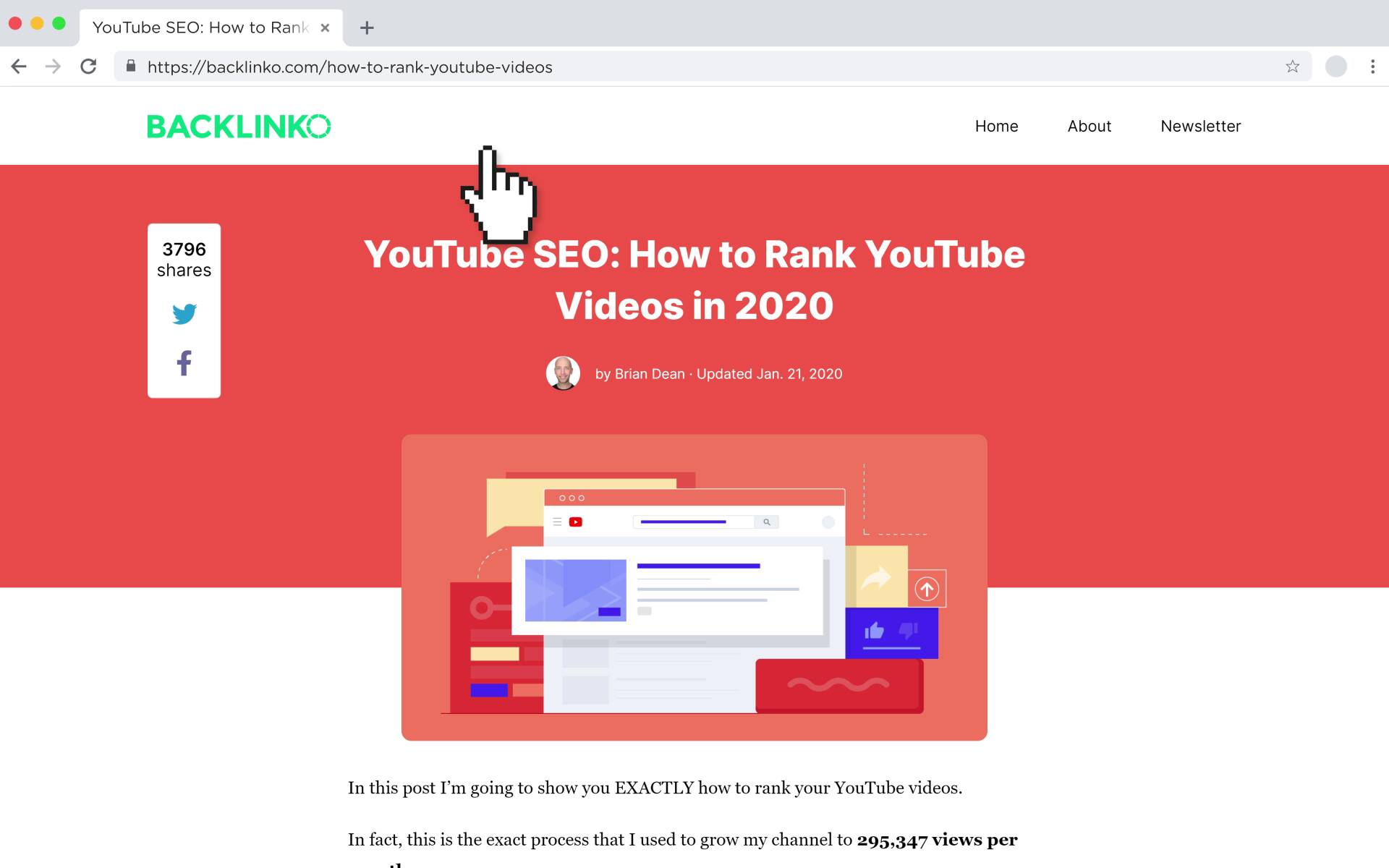AI Optimization: How to Rank in AI Search (+ Checklist)

Written by Asif Ali

When a potential user asks ChatGPT, Google AI, or Perplexity for recommendations, does your brand appear in the answer?
Not just cited — actually mentioned in the response?
That’s a crucial distinction.
Brands that AI systems mention with context and positive sentiment attract the most intent-driven traffic.
Semrush research shows that visitors who find a brand in an AI answer are 4.4 times more valuable than those from traditional search.
They’re pre-qualified. They’ve seen AI endorse your solution.
And unlike SEO, AI doesn’t care about website authority.
Most sources cited in AI responses don’t even rank in Google’s top 20.
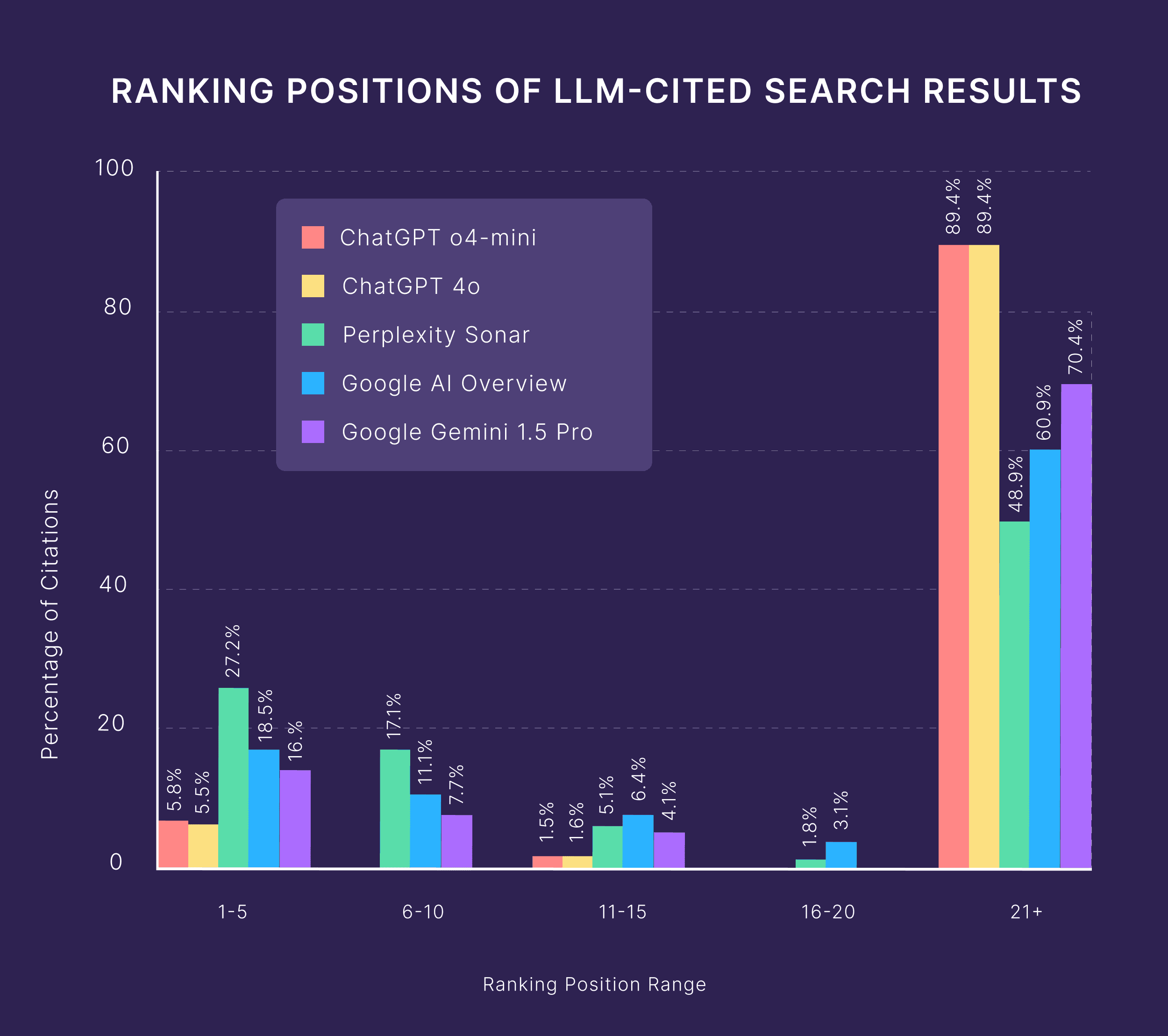
So if you follow best practices, your startup can earn favorable mentions over more established competitors.
Meritocracy.
How do you make that happen?
Read on to learn:
- How AI search works
- How the Backlinko team approaches AI SEO
- Best practices to make your site AI-ready
Let’s start with the basics of AI optimization.
Grab our free AI Search Optimization Checklist and follow the exact steps we use to get cited across ChatGPT, Google, and more.
What Is AI Optimization (And Why You Should Care)?
AI optimization is the process of making your website accessible and understandable to AI-powered search tools. Like ChatGPT, Claude, Gemini, Perplexity, Google AI Overview, and Bing Copilot.
Some call it “AI search optimization.” Others “AI content optimization.”
Terminologies vary, but they’re all about the same thing:
Make your site easy for large language models (LLMs) to find, understand, and reference in their answers.
It’s not a brand-new strategy. It’s built on the core SEO principles.
Only now, you’re optimizing for tools that pull, summarize, and use your information — not just rank.
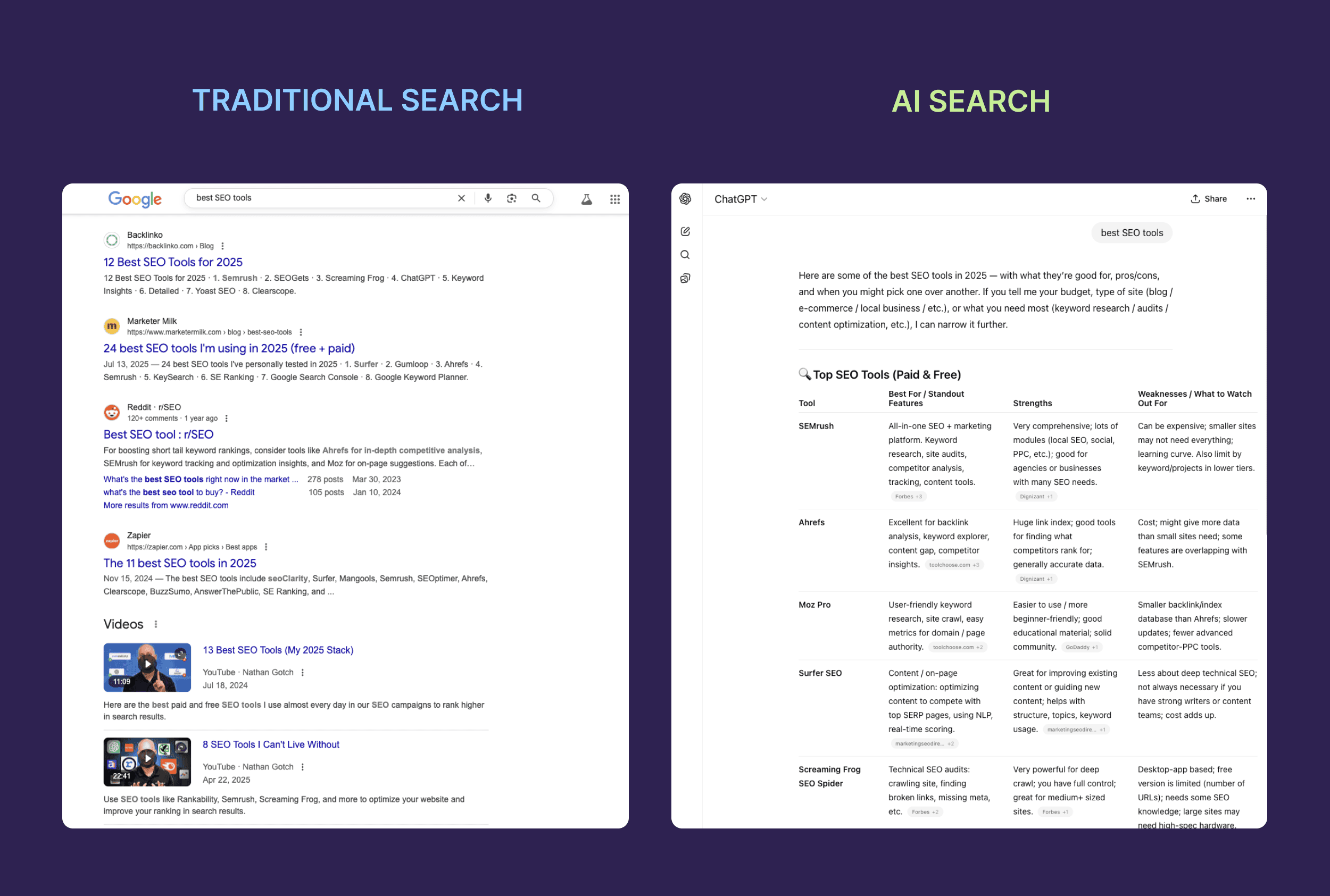
But why is AI optimization so important now?
AI tools are expected to drive more traffic than traditional search engines by 2028.
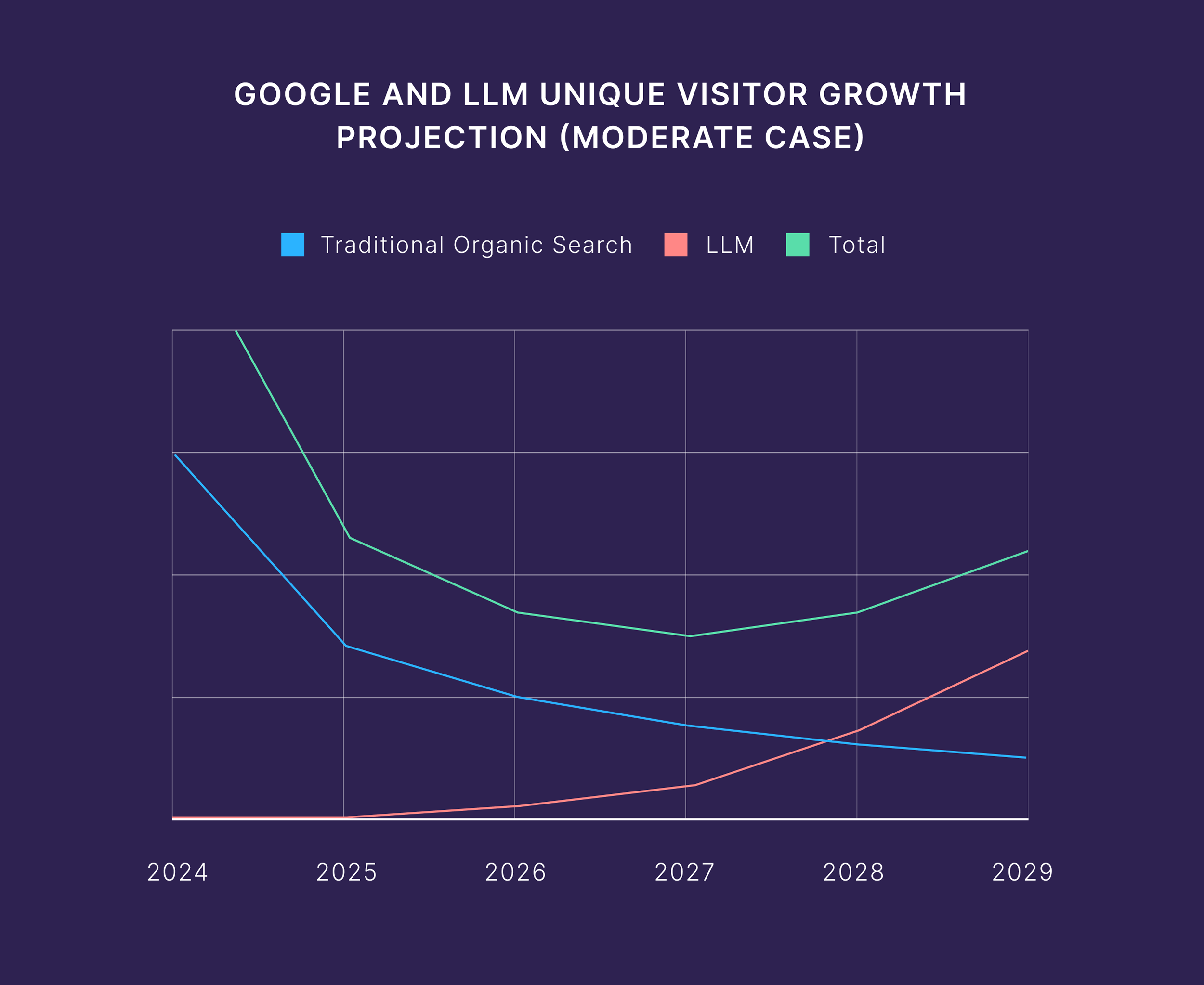
And here’s the kicker:
This traffic pool is only getting bigger.
Over 700 million people use ChatGPT every week. Millions more use Perplexity, Gemini, and other AI platforms.
Google’s AI Mode already has more than 100 million monthly active users. And that’s just in the US and India.
As it rolls out globally, adoption will only grow.
AI search optimization helps you be visible to these users.
It ensures your site appears in AI-powered search results, increasing your chances of getting referral traffic and finding new customers.
How AI Search Works
LLMs find relevant content across the web based on users’ prompts, then combines it into one comprehensive answer with source links.
There are three broad steps:
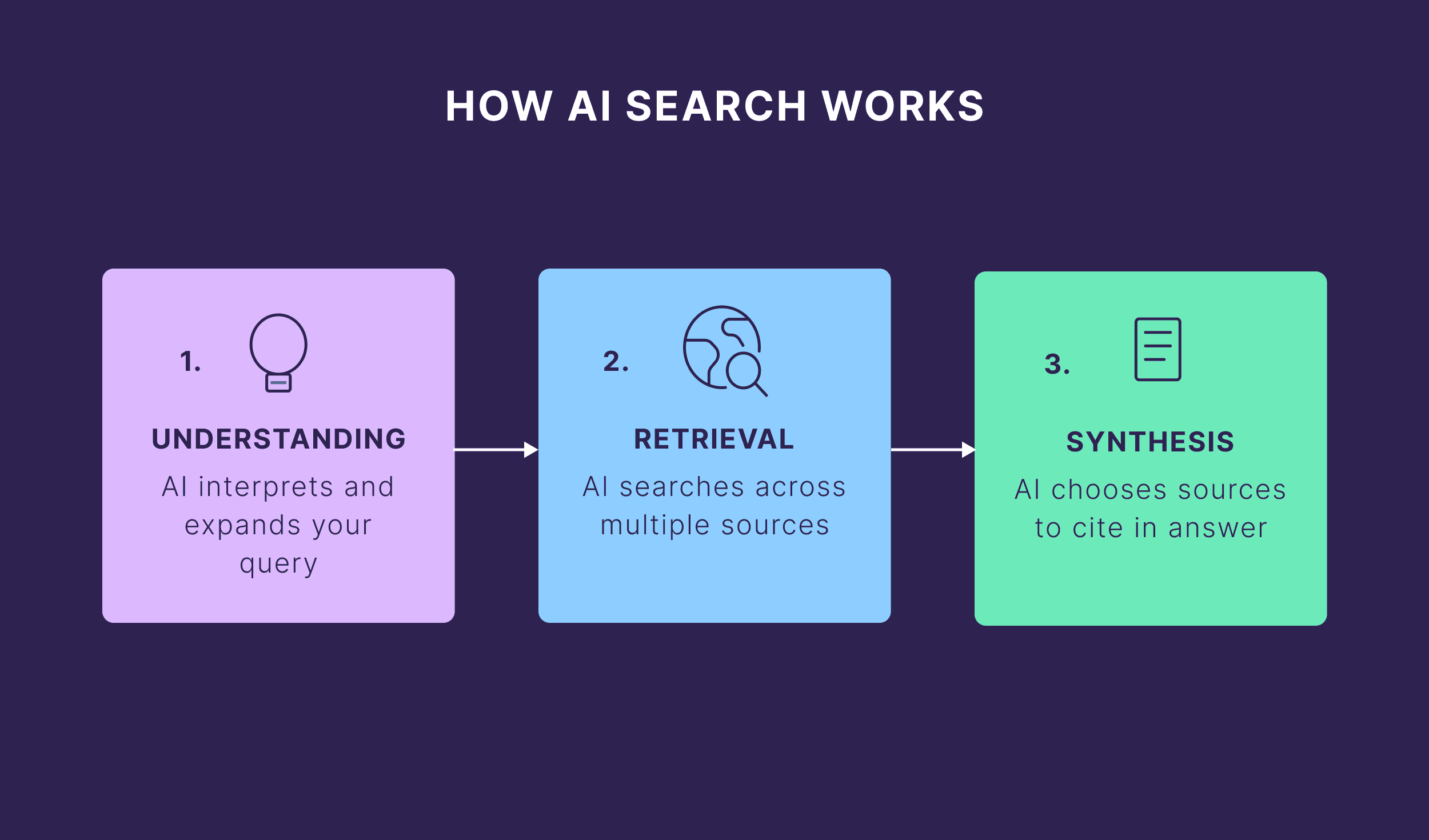
1. Understanding Your Prompt
First, AI interprets what you’re asking.
Some platforms (and specific models) may even expand or tweak your query for better results.
For instance, if I search “best sneakers,” ChatGPT’s o3 model searches for more specific phrases like “best running shoes 2025.”
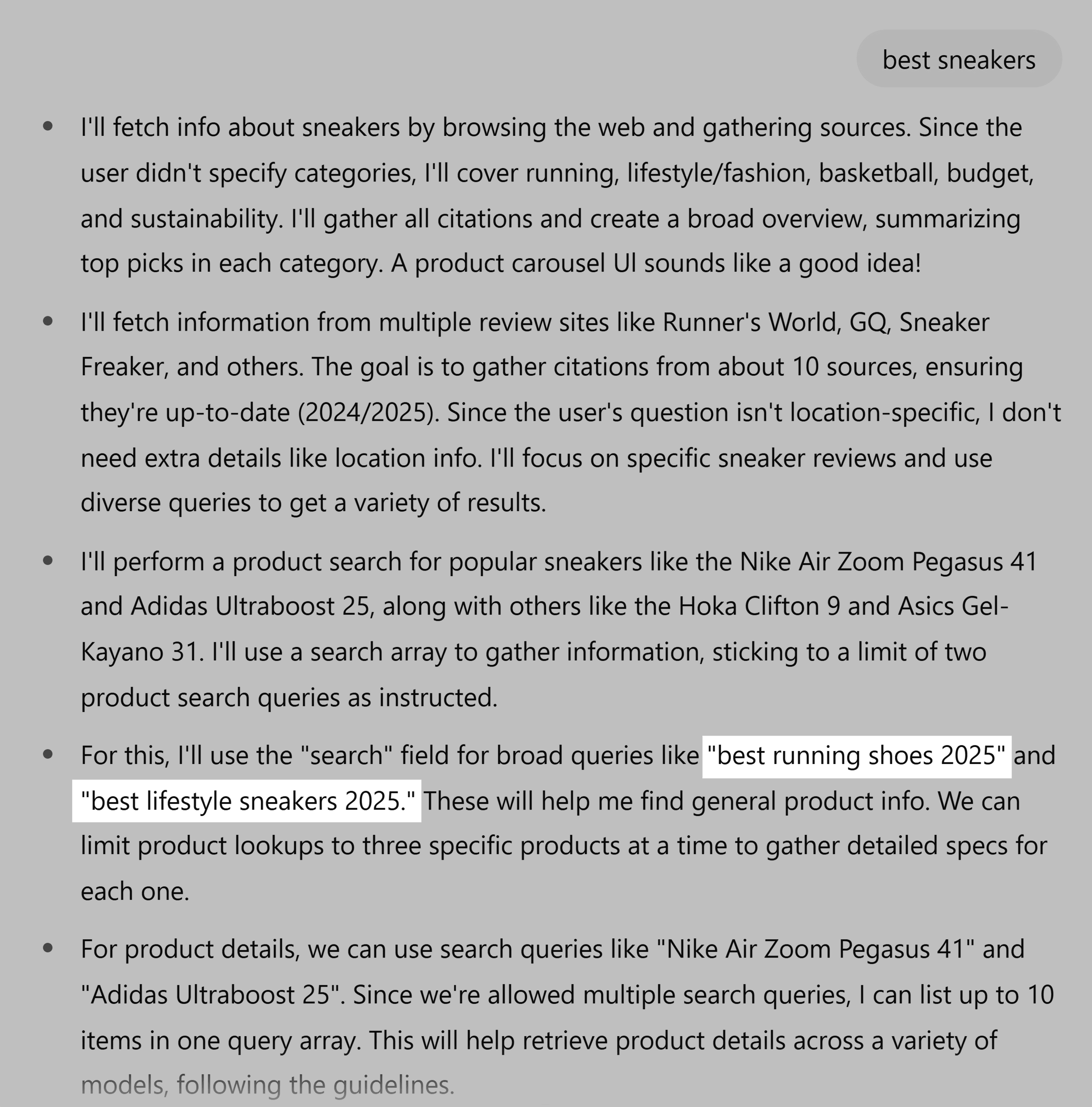
2. Retrieval
Next, the AI platform searches for information in real time.
Different platforms use different sources (Google’s index, Bing, curated databases, etc.). But they all work the same way.
They gather relevant content from across the web for your expanded query.
3. Synthesis
Finally, AI decides which sources to include.
How?
The exact criteria aren’t public. But these factors seem to matter the most:
- Authority: Recognized brands (entities it knows) and established experts
- Structure: Clear, scannable content with direct answers
- Context: Content that covers topics semantically (related concepts, not just keyword matches)
The most relevant sources get cited. The rest get ignored.
Which means ranking well isn’t enough. Your content also needs to be properly structured for AI systems.
I Analyzed 10 Queries Across Multiple AI Search Platforms: Here’s What I Found
Before we move forward to discuss how to optimize for AI search, I wanted to understand three things:
- Do different AI platforms cite different types of content?
- Which domains consistently appear across platforms?
- Does multi-platform presence actually matter for AI visibility?
So I ran a simple experiment.
I searched 10 queries across ChatGPT 5, Claude Sonnet 4, Perplexity (Sonar model), Gemini 2.5 Flash, and Google’s AI Mode — a mix of commercial, informational, local, and trending topics.
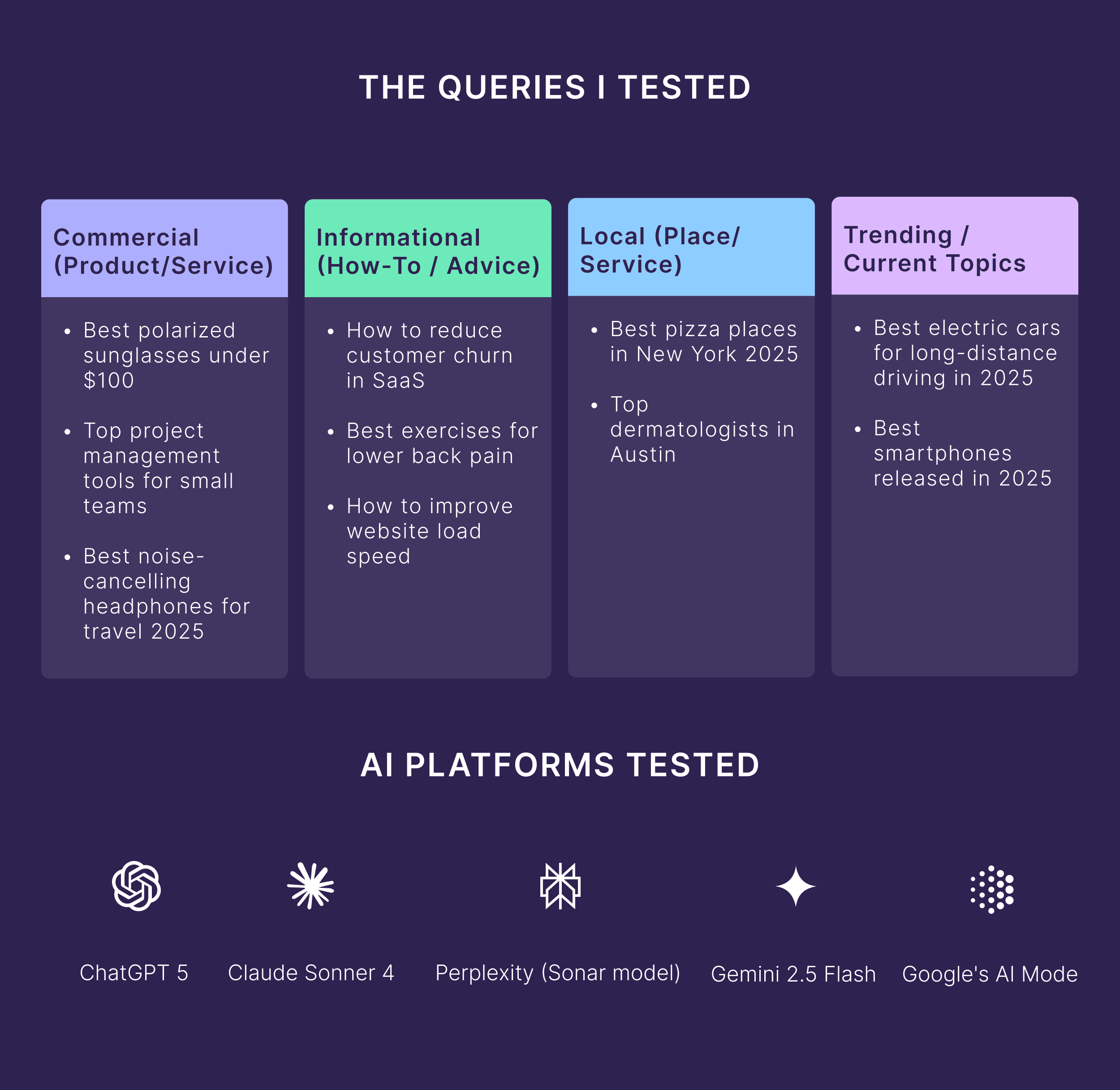
And I found some interesting insights.
How Each Platform Chooses Sources
| Platforms | Citation Behavior |
|---|---|
| ChatGPT | Acts like a community aggregator. Mixes Reddit discussions with Wikipedia and review sites. |
| Claude | Prefers recent, authoritative sources. Zero Reddit citations. Focuses on 2024-2025 content |
| Perplexity | Most diverse. Balances buying guides, YouTube reviews, and some Reddit. |
| Gemini | Relies mostly on training data. And since there’s no option to turn on web search, you can’t get it to cite sources for most of your queries. |
| Google AI Mode | Pulls from beyond top search results. 50% of citations weren’t on page one of Google. |
The “Citation Core” Effect
Certain domains have achieved what we call the “citation core” status.
Citation core (n.): A small group of sites and brands that every major AI search tool trusts, cites, and uses as default sources.
Wikipedia showed up 16 times. Mayo Clinic owned health queries. RTINGS controlled electronics reviews.
These sites have become AI’s default sources.
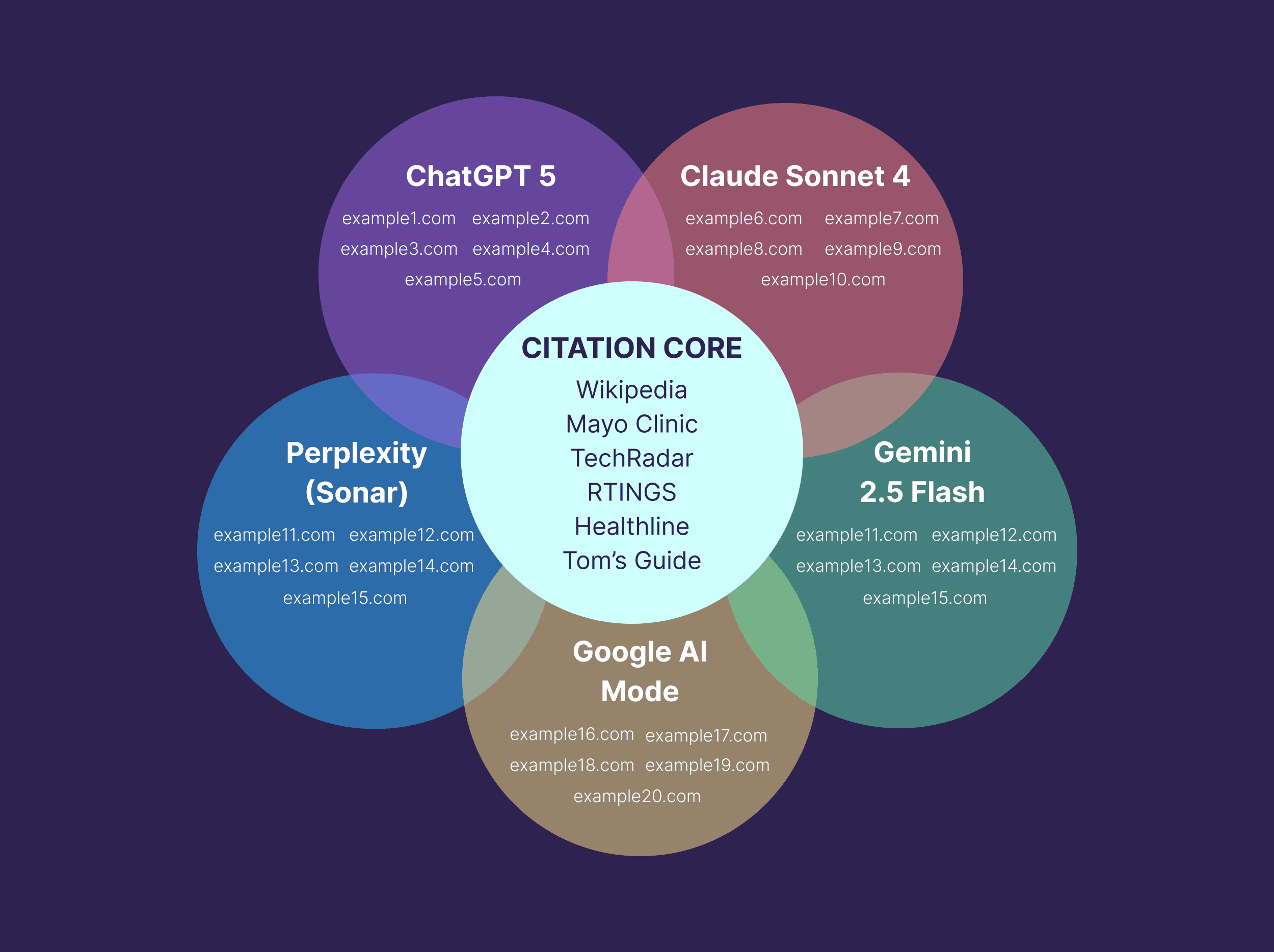
What This Means for Brand Sites
One pattern jumped out: Official brand websites were underrepresented.
In my test, they made up around ~10% of all citations.
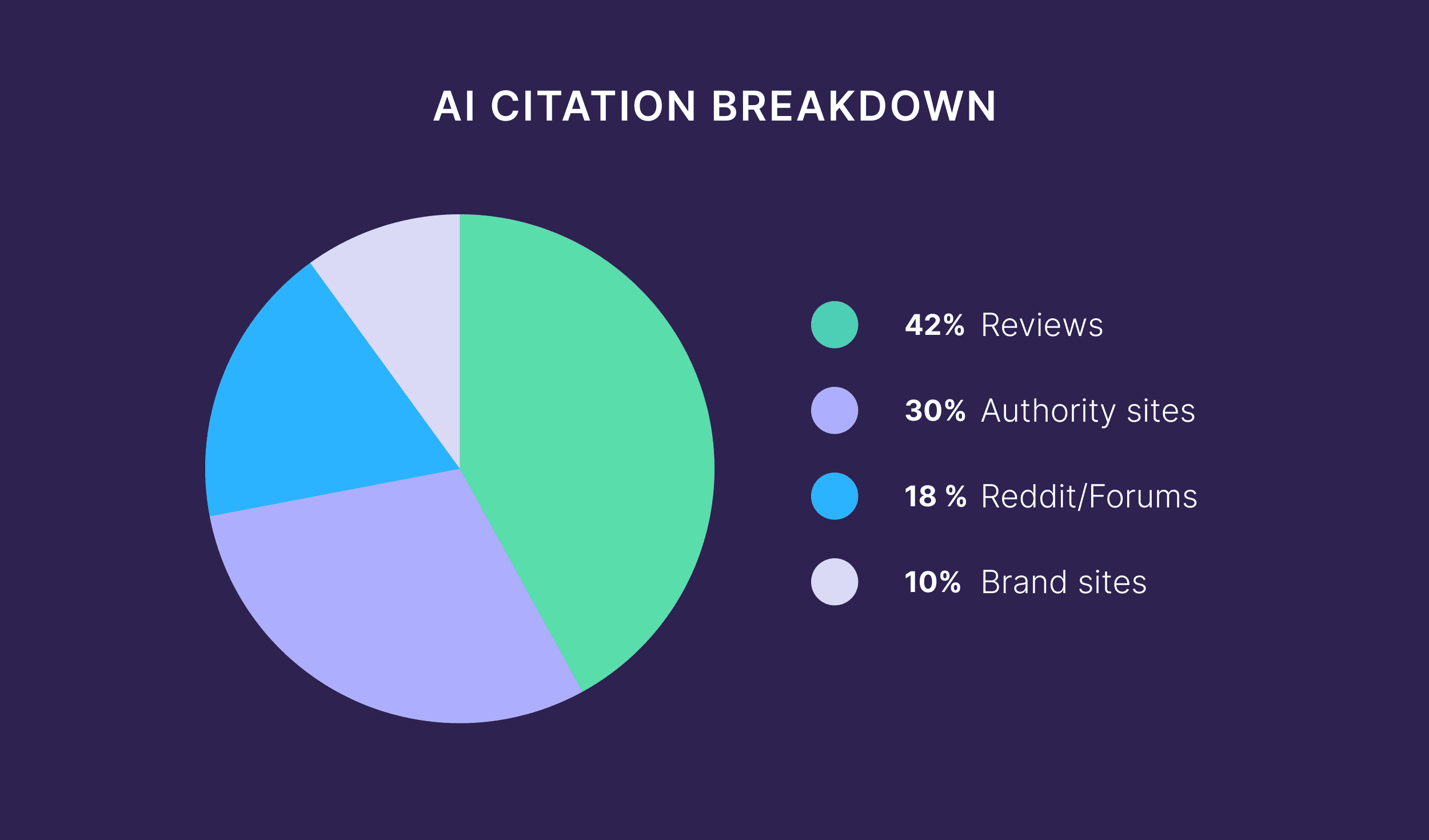
But that doesn’t mean your site doesn’t matter for informational or educational queries.
It means most sites aren’t yet AI-friendly. And that’s the opportunity.
When your site is structured, detailed, and optimized, it becomes one of the few brand-owned sources AI can actually cite for product specs, features, case studies, and stats. Information third-party sites can’t provide.
Think of it like this: Your website gives you the authoritative base layer. Off-site presence just amplifies it.
These findings aren’t surprising. But they reinforce what we’ve suspected all along.
In fact, a lot of what we do here at Backlinko aligns with these patterns:
- Creating citable content
- Doing A/B tests to optimize our site
- Earning third-party validation.
- Building authority across platforms (Did you check our YouTube channel?)
How to Optimize Your Website for AI Search
Google’s guideline says good SEO is good AI optimization.
Their official guidelines mostly rehash standard SEO practices, with a few AI-specific points. Like using preview controls and ensuring structured data matches visible content.
But there’s much more to it than that.
Getting cited in AI answers is a team sport.
PR, product, support, and customer success all play a role. (Check out AI Search Strategy: The Seen & Trusted Brand Framework where we discuss this.)
But the foundation to make your site AI search-ready starts with three teams working in sync:
- Developers: They make your site technically accessible to AI crawlers
- SEOs: They structure content so AI can extract and understand it
- Content teams: They create information worth extracting
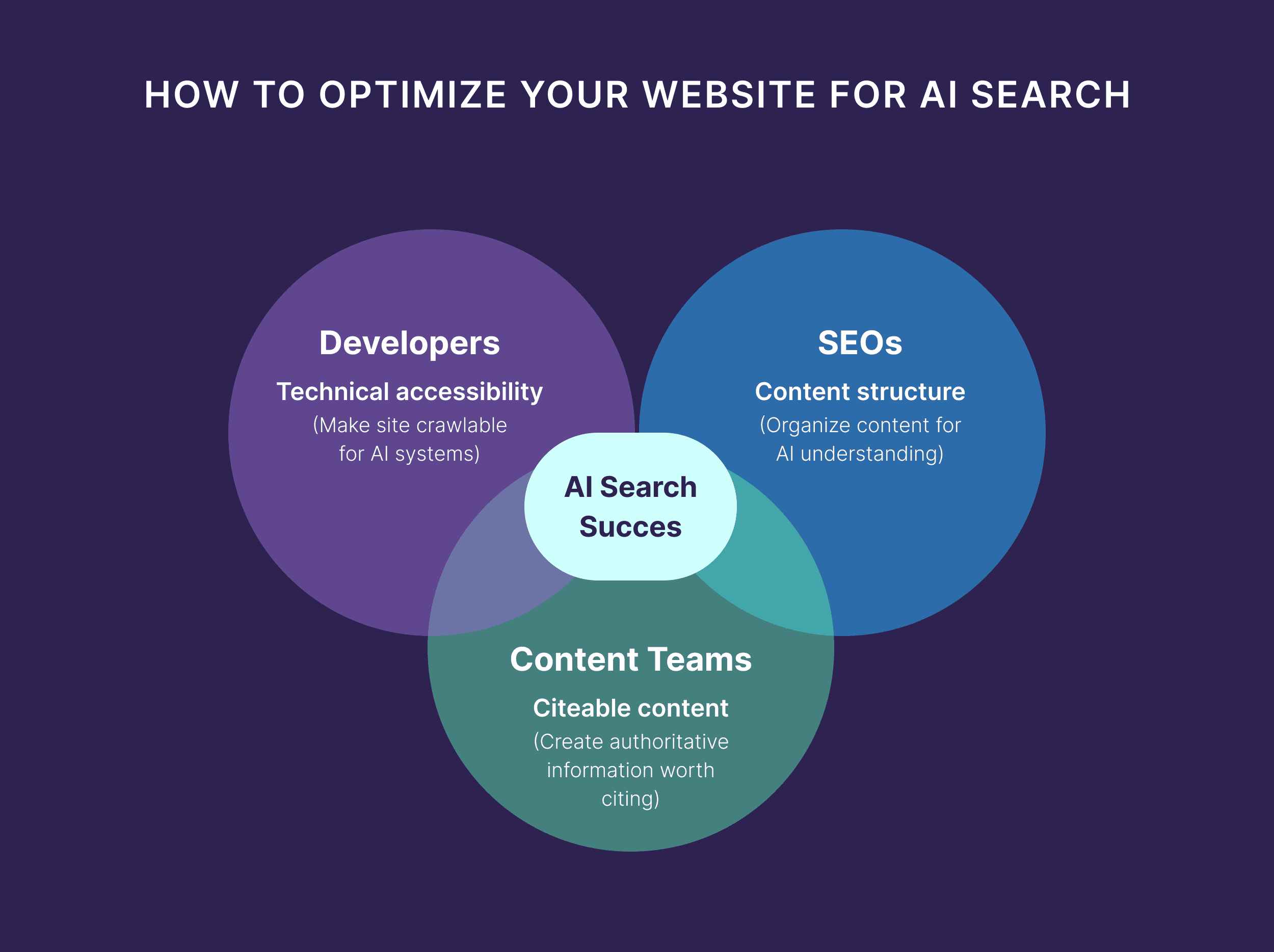
Most companies treat these as separate projects.
That’s a mistake.
Leigh McKenzie, Head of SEO at Backlinko, explains why:
“Ranking in Google doesn’t guarantee you’ll show up in AI tools. SEO is still table stakes. But generative engines don’t just lift the top results. They scan at a semantic level, fan queries out into dozens of variants, and stitch together answers from multiple sources.”
You’ll need a coordinated effort to execute.
Let’s look at exactly what each team needs to do for effective AI search optimization.
Note: Most traditional SEO practices work for AI optimization too.
I’m not covering the basics here, like using sitemaps and including metadata. You should already be doing those.
Instead, I’m focusing on factors that specifically impact AI search visibility. These are insights based on my own experience, analyzing what’s working across different sites, and comparing notes with other SEOs.
Want the complete list?
I’ve created an AI Search Engine Optimization Checklist that covers everything — the well-known tactics, the experimental ones, and the “can’t hurt to try” optimizations that might give you an edge.
Developer Tasks
Understanding how to optimize for AI search starts with your developers. Because they control whether AI can actually access and understand your content.
No access means no citations.
Here’s what they need to check:
1. Make Your Site Accessible to AI Crawlers
AI crawlers need permission to access your site through your robots.txt file.
If you block them, your content won’t appear in AI search results.
Here are the main AI crawlers:
- GPTBot (OpenAI/ChatGPT)
- Google-Extended (Google’s AI Overview)
- Claude-Web (Anthropic/Claude)
- PerplexityBot (Perplexity)
To check if you’re blocking them, go to yoursite.com/robots.txt.
Look for any lines that say “Disallow” next to these crawler names.
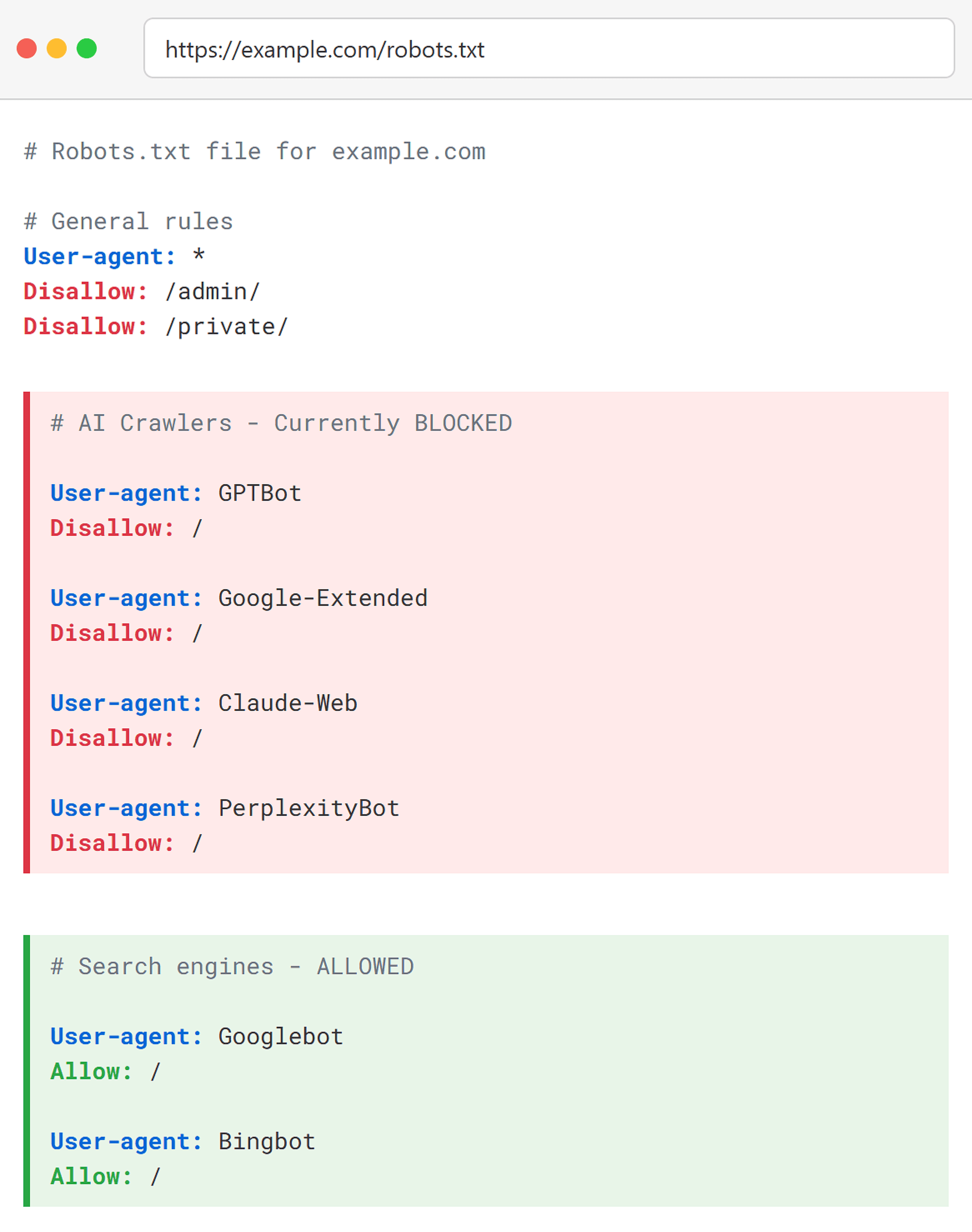
If you find them blocked (or want to make sure they’re allowed), add these lines to your robots.txt:
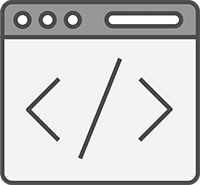
User-agent: GPTBot
Allow: /
User-agent: Google-Extended
Allow: /
User-agent: Claude-Web
Allow: /
User-agent: PerplexityBot
Allow: /This tells AI crawlers they can access your entire site.
Wondering if you need an LLMs.txt file? The short answer is that you don’t necessarily need it, but it doesn’t hurt, either. Check out our LLMs.txt guide for more details.
2. Whitelist AI Bots in Your Firewall
Cloudflare, Sucuri, and other web application firewalls (WAFs) sometimes block legitimate AI crawlers as “suspicious bots.”
For instance, Cloudflare now blocks AI bots from accessing its clients’ websites by default.
You have to turn off this security feature to ensure AI bots can crawl your site.
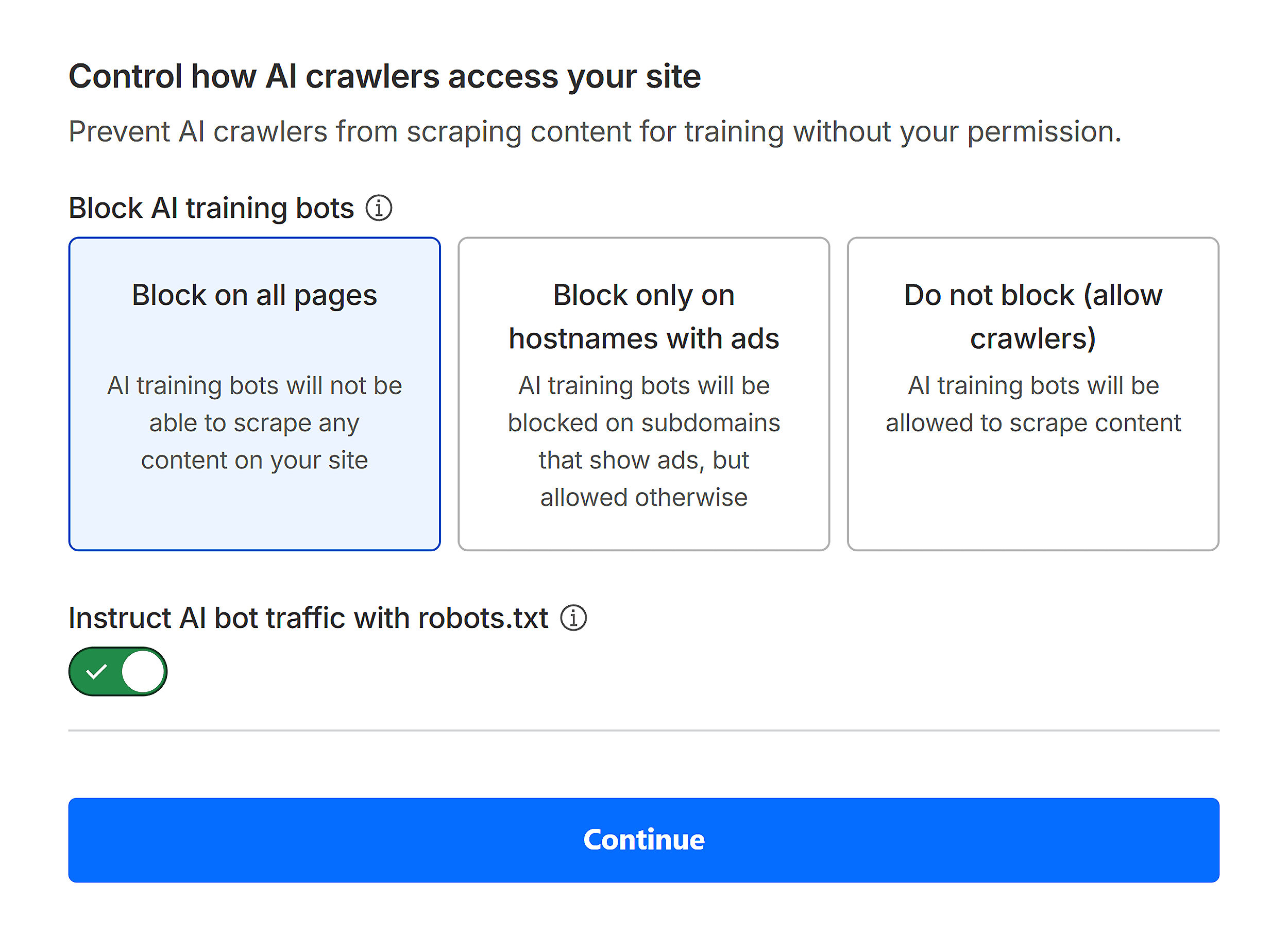
Check your firewalls and security tools.
See if they’re blocking requests from AI user agents or giving 403 errors. And address that issue.
Remember: no access, no citations.
3. Use Semantic HTML So AI Knows What’s Important
AI needs to understand what’s important on your page.
Clean HTML helps. Messy code doesn’t.
Use proper HTML tags for your content:
- <h1> for your main title
- <h2> and <h3> for subheadings
- <article> for blog posts
- <main> for primary content
- <aside> for sidebars
Don’t dump everything in generic <div> tags.
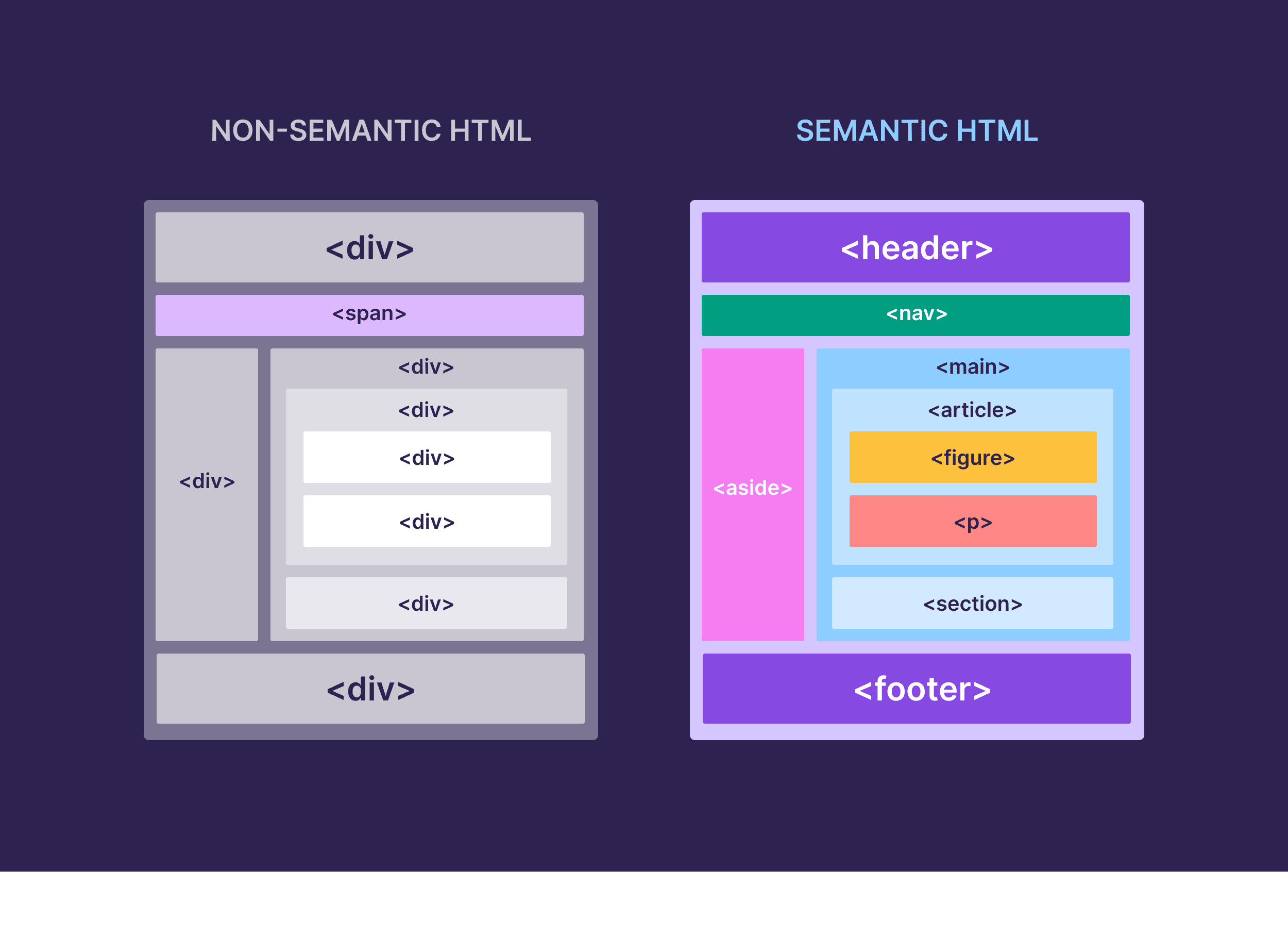
Also, avoid hiding important content behind JavaScript.
AI crawlers can’t execute JavaScript.
If your main content only appears after JavaScript runs, AI will miss it entirely.
Like in this example of Airbnb:
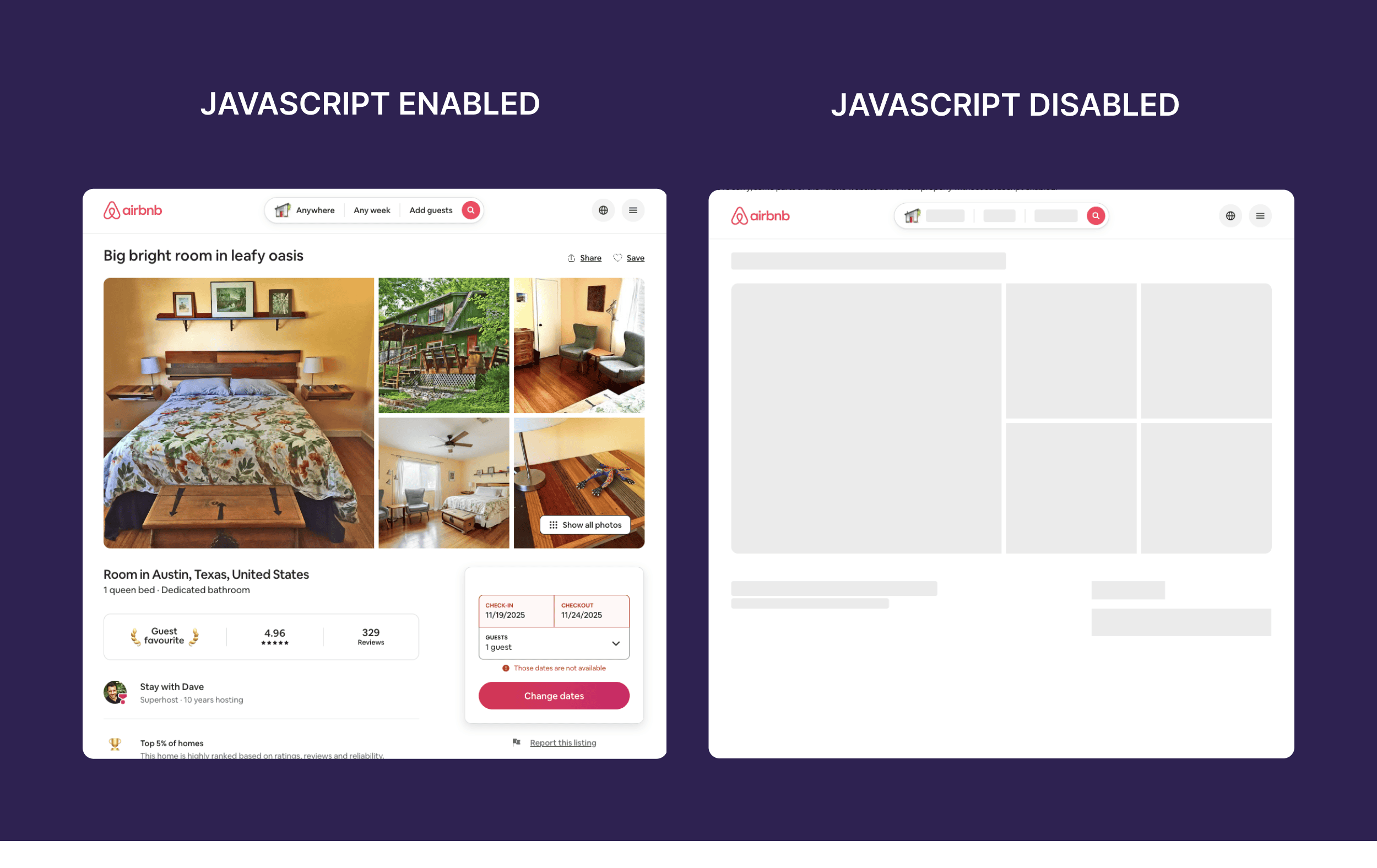
4. Add Visible Dates for Freshness Signals
AI systems need to know when your content was published or last updated.
This is especially important for time-sensitive topics like news, prices, or trends.
Without visible dates, AI might assume your content is outdated and skip it entirely.
So, display your dates prominently on every page.
Use a consistent format like “Published: June 15, 2024” or “Last Updated: August 15, 2025.”
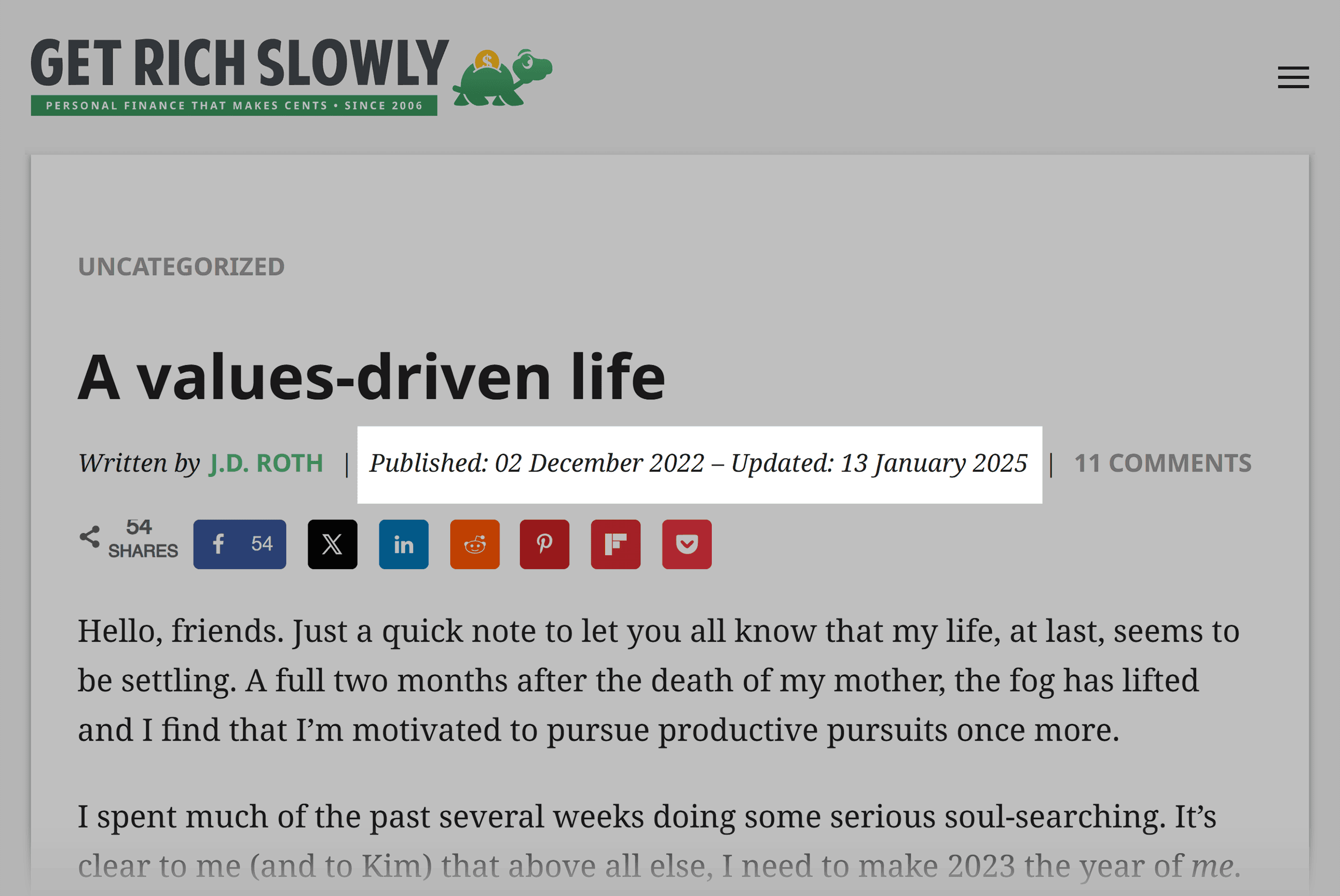
Also, add schema markup for dates in your code:

json"datePublished": "2024-01-15",
"dateModified": "2024-12-15"This gives AI a machine-readable version it can’t misinterpret.
5. Remove Barriers to Content Access
Pop-ups and overlays can prevent AI from reading your content.
For instance, the crawler might grab your newsletter signup text instead of your actual article.
So you want to avoid:
- Full-screen pop-ups on page load
- Content that requires clicking “Read More” to expand
- Infinite scroll that hides content
If you must use popups, delay them by at least 30 seconds.
Or better, use exit-intent popups, which appear when the visitors are about to leave.
Make sure your main content is immediately visible in the HTML.
Think of it this way: AI crawlers are impatient visitors who won’t interact with your page.
Give them what they came for immediately, or they’ll leave empty-handed.
6. Optimize Your Server Response Time
Your server response time is how long it takes your server to start sending data after receiving a request.
If it’s slow, your pages take longer to load.
And AI crawlers may move on before they ever see your content.
You can use Google’s PageSpeed Insights tool to check your server response time.
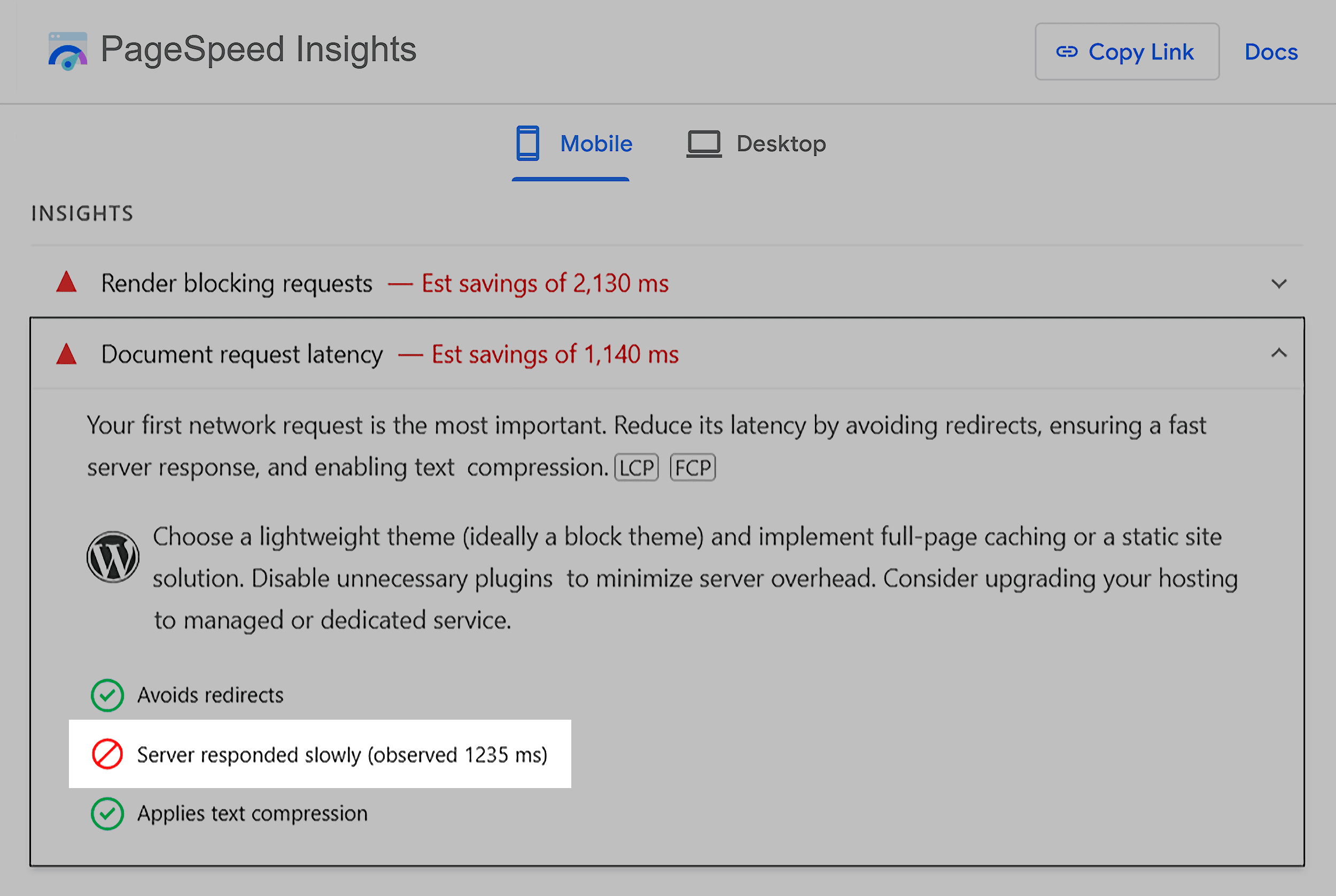
It also shows your page’s overall performance and speed.
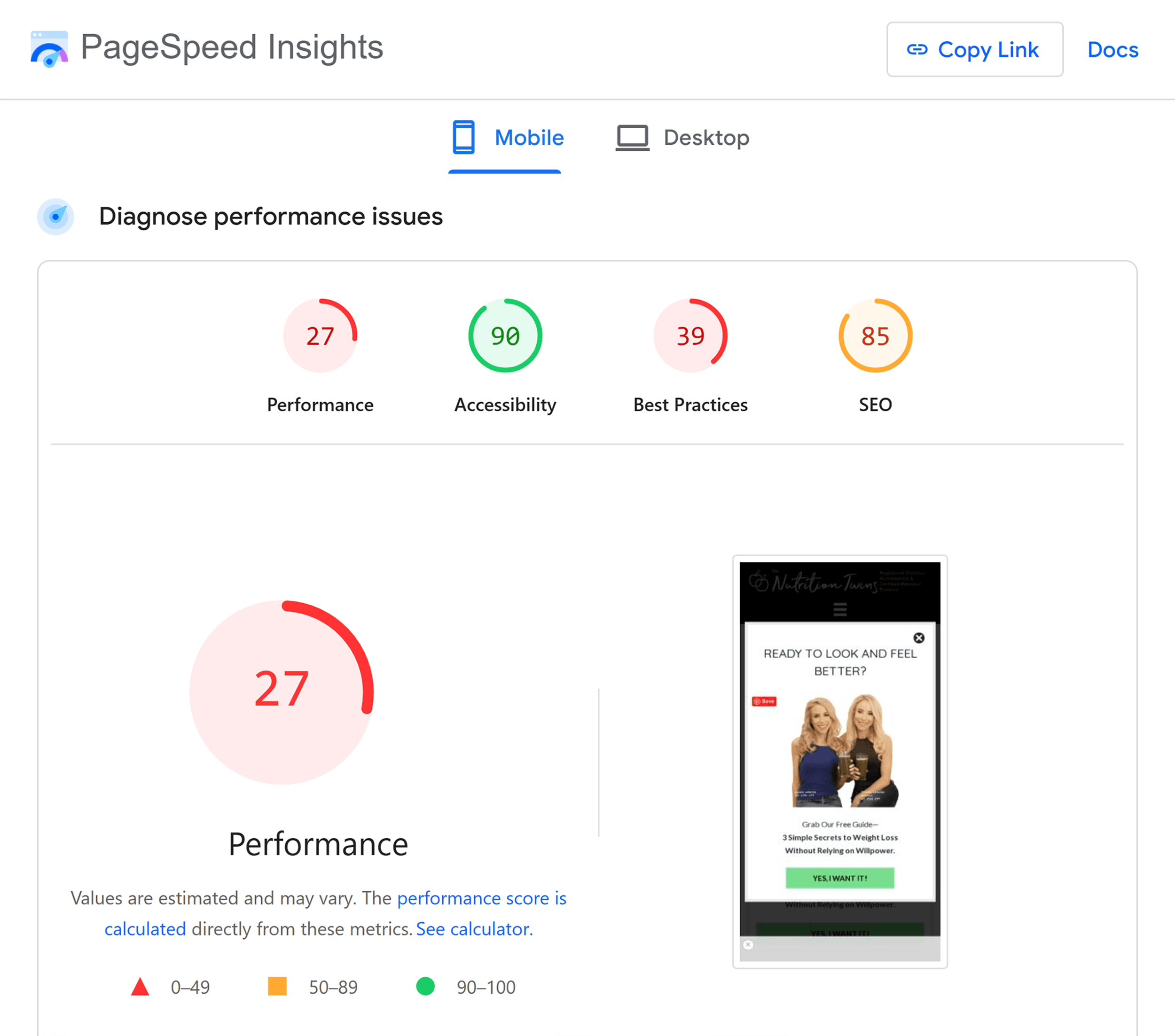
If you score below 50, your site likely has serious speed issues.
How to improve it?
- Enable caching. This stores copies of your pages so your server doesn’t rebuild them for every visitor.
- Compress your images before uploading them. Large images are the most common cause of slow pages.
- Use a content delivery network (CDN). This serves your content from servers physically closer to your visitors, reducing load time.
The faster your server responds, the more likely AI crawlers are to reach and index your content.
Further reading: Page Speed and SEO: Best Practices
SEO Tasks
Your developers handled the technical requirements. AI can now access your site.
But access doesn’t guarantee visibility in AI results.
Your SEO team controls how AI discovers, understands, and prioritizes your content.
Here’s what they need to control in your AI SEO strategy:
7. Structure Pages for Fragment-Friendly Indexing
AI pulls specific fragments from your pages — sentences and paragraphs it can use in responses.
Your page structure affects how easily AI can extract these fragments.
Start with a clean heading hierarchy.
Proper H2s and H3s help AI (and your readers) understand where one idea ends and another begins.
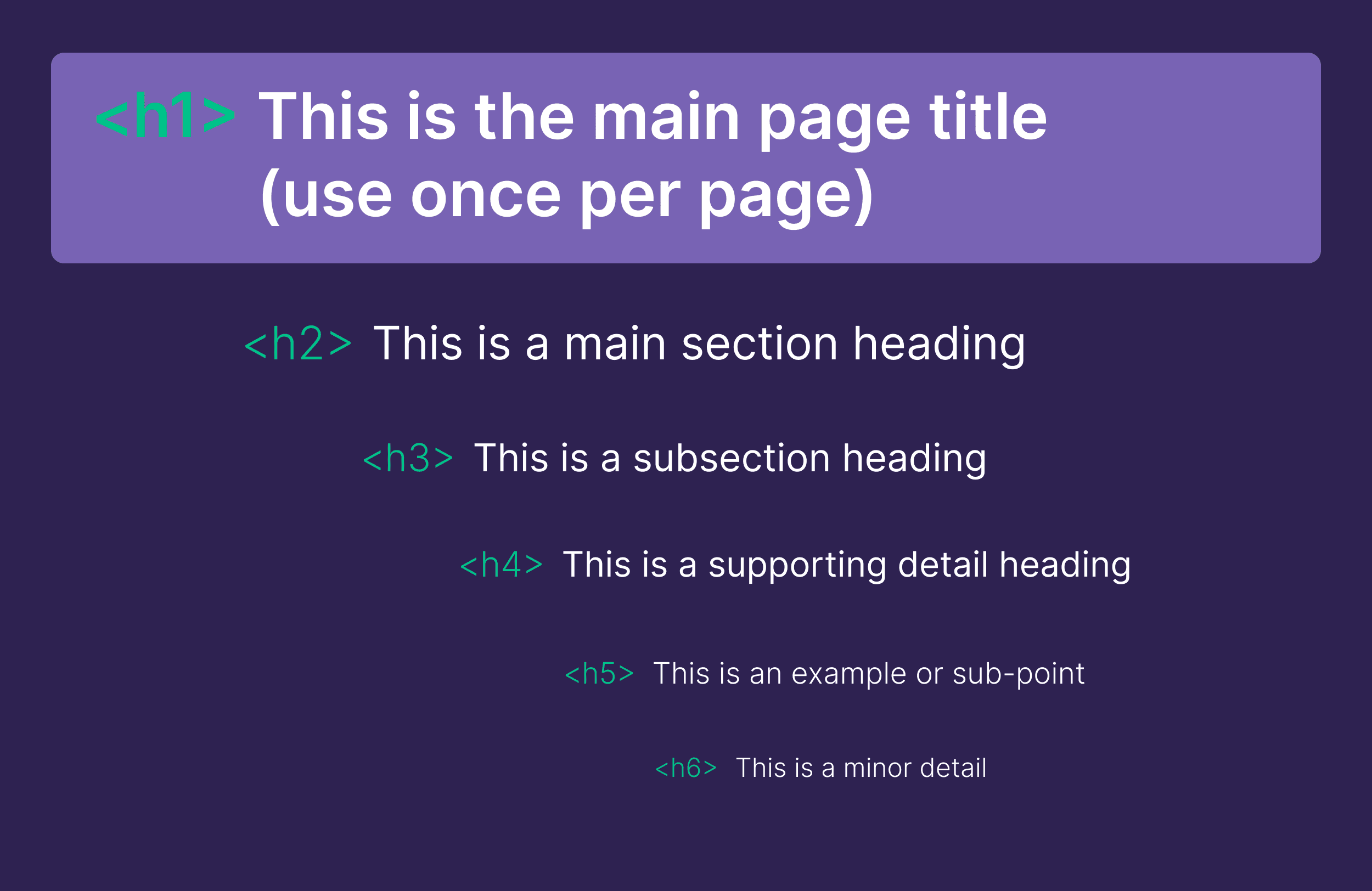
Go a step further by breaking big topics into unique subsections.
Instead of one giant guide to “healthy recipes,” create separate sections for “healthy breakfast recipes,” “healthy lunch recipes,” and “healthy dinner recipes.”
That way, you match the variations people actually search for.
Pro tip: Don’t bury your best insights in long paragraphs.
- Use callouts (like this one)
- Add short lists and bullets
- Drop quick tables for comparisons
That’s how you turn raw text into structured fragments AI can actually use.
When your content is structured this way, every section becomes a potential answer.
8. Build Topic Clusters That Signal Full Coverage
Internal linking creates topical connections across your site.
When you link related pages together, you’re building topic clusters that show comprehensive coverage.
This is standard SEO practice that also helps AI discovery.
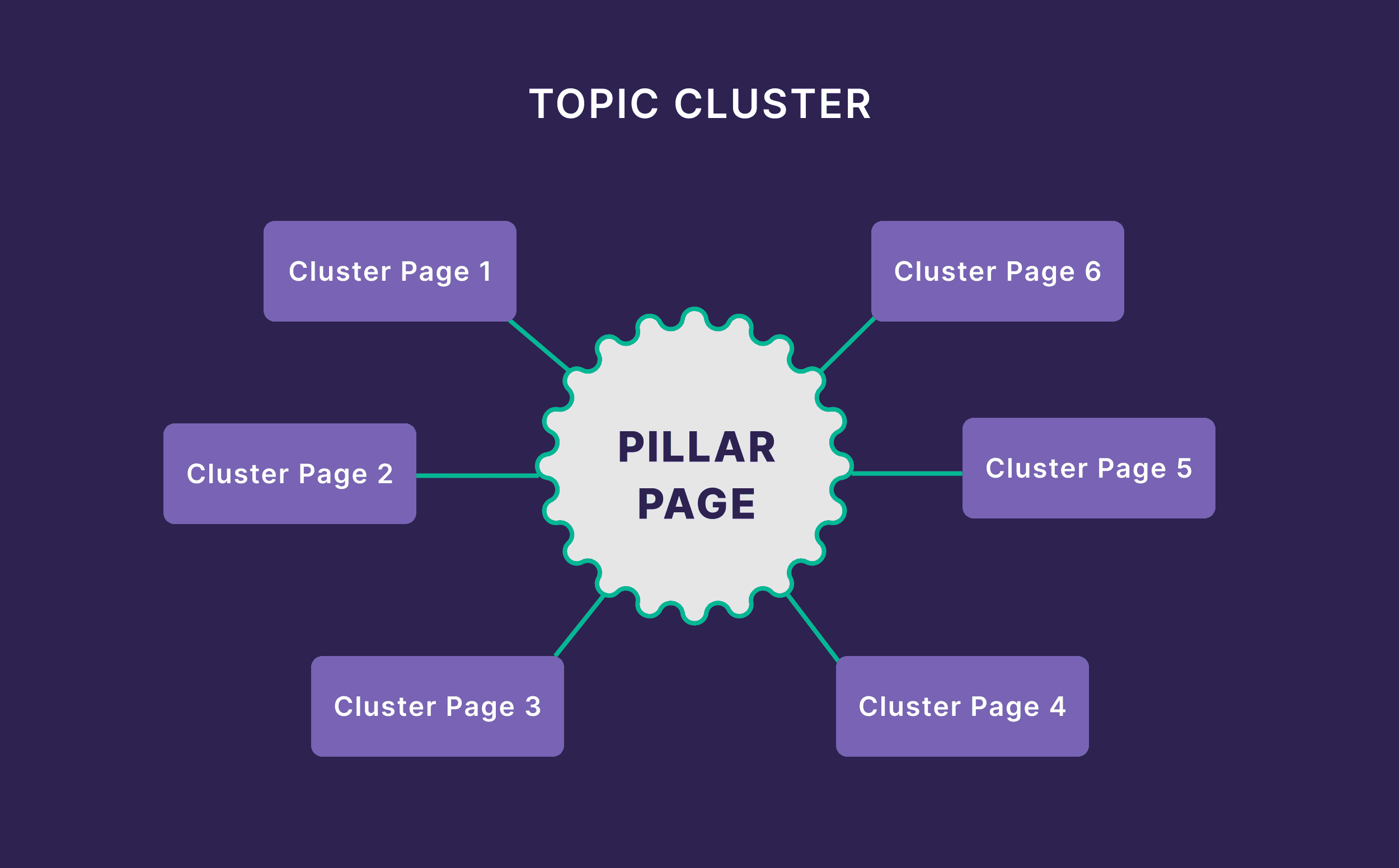
Create pillar pages for your main topics. These are comprehensive guides that link out to all related content.
For “project management,” your pillar would link to:
- Task automation guide
- Team collaboration tools
- Workflow optimization
- Resource planning
Each supporting page links back to the pillar and to other relevant pages in the cluster.
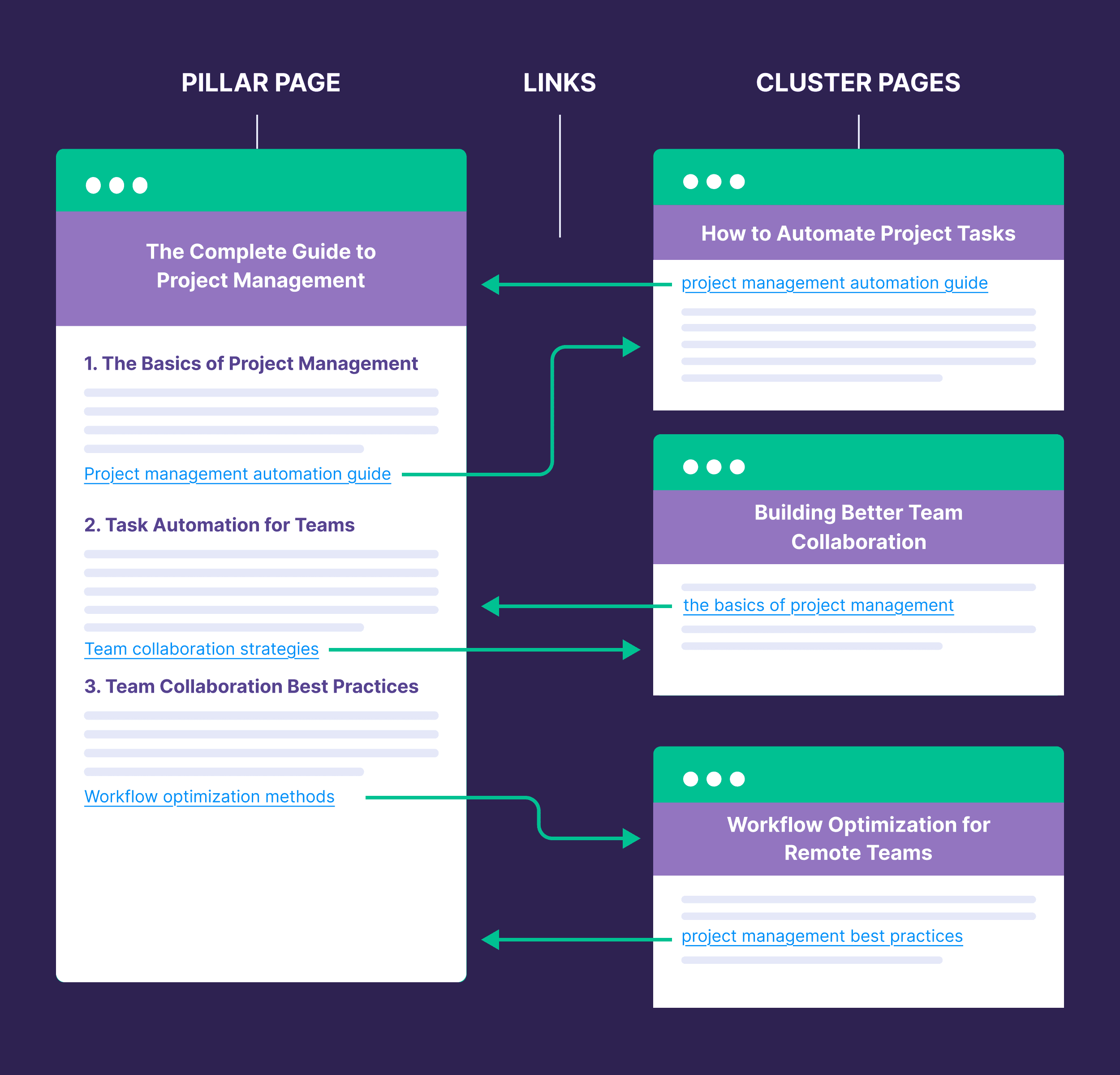
Use descriptive anchor text throughout.
“Project management automation guide” provides context. “Click here” doesn’t.
This helps both users and AI understand page relationships.
The cluster structure accomplishes two things:
- First, it improves crawl efficiency. AI finds your hub and immediately discovers all related content through the links.
- Second, it demonstrates topical depth. Organized clusters show comprehensive coverage better than scattered pages.
This structural approach helps organize your site architecture to showcase expertise through strategic internal linking.
9. Add Schema Markup to Label Your Content
When AI crawls your page, it sees text.
But it doesn’t know (without natural language processing) if that text is a recipe, a review, or a how-to guide.
Schema explicitly labels each element of the page.
It makes data more structured and easier to understand.
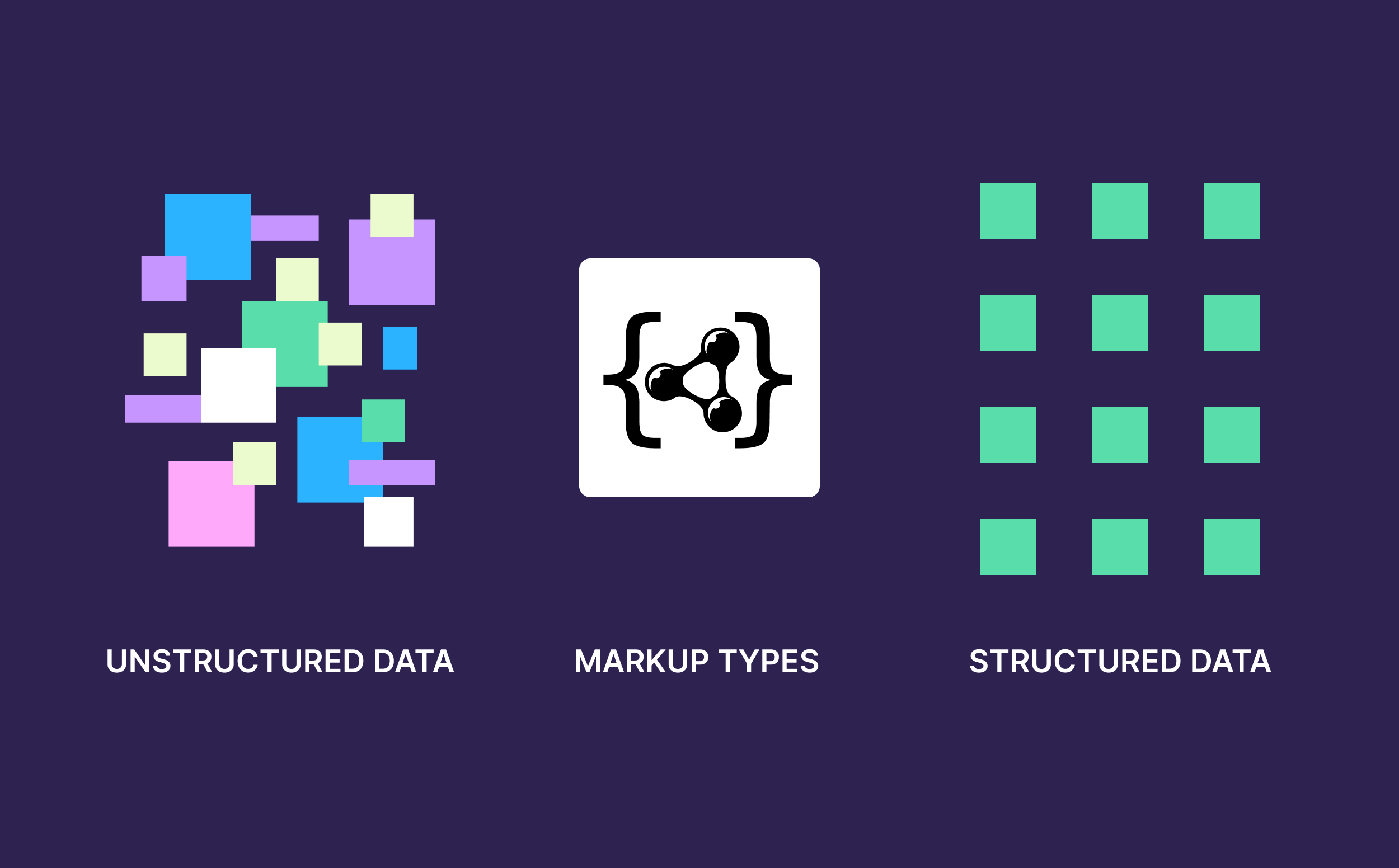
There are several types of schema markups.
I’ve found the FAQ schema particularly effective for AI search visibility.
Here’s how it looks:

json{
"@type": "FAQPage",
"mainEntity": [{
"@type": "Question",
"name": "What is churn rate?",
"acceptedAnswer": {
"@type": "Answer",
"text": "Churn rate is the percentage of customers who cancel during a specific period."
}
}]
}This markup tells AI exactly where to find questions and answers on your page.
The Q&A format matches how AI structures many of its responses, making your content easy to process.
Depending on the content management system (CMS) you’re using, you can add schema using plugins, add-ons, or manually.
For instance, WordPress has several good plugins.
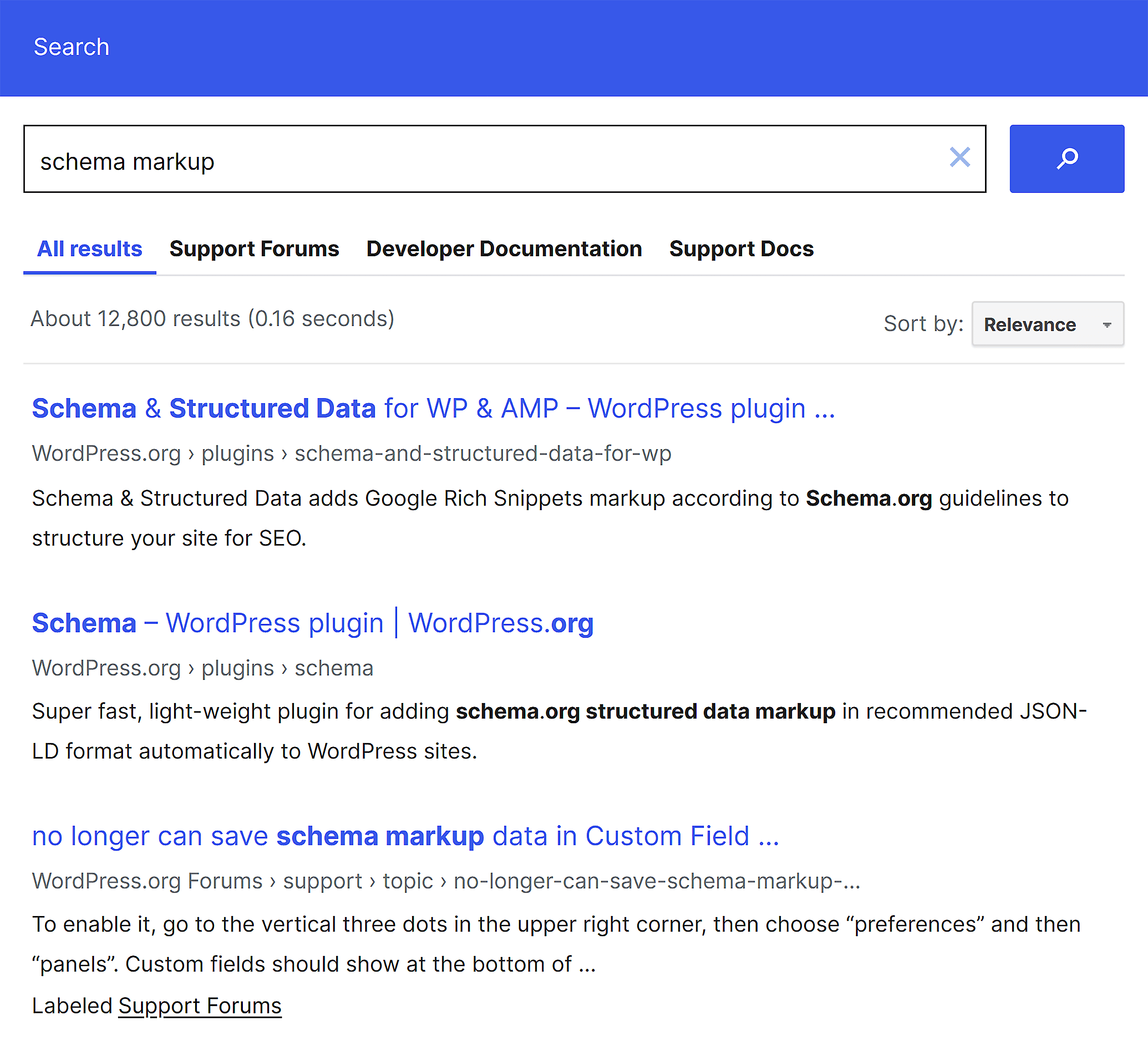
After implementation, you can test it at validator.schema.org to ensure it’s working properly.
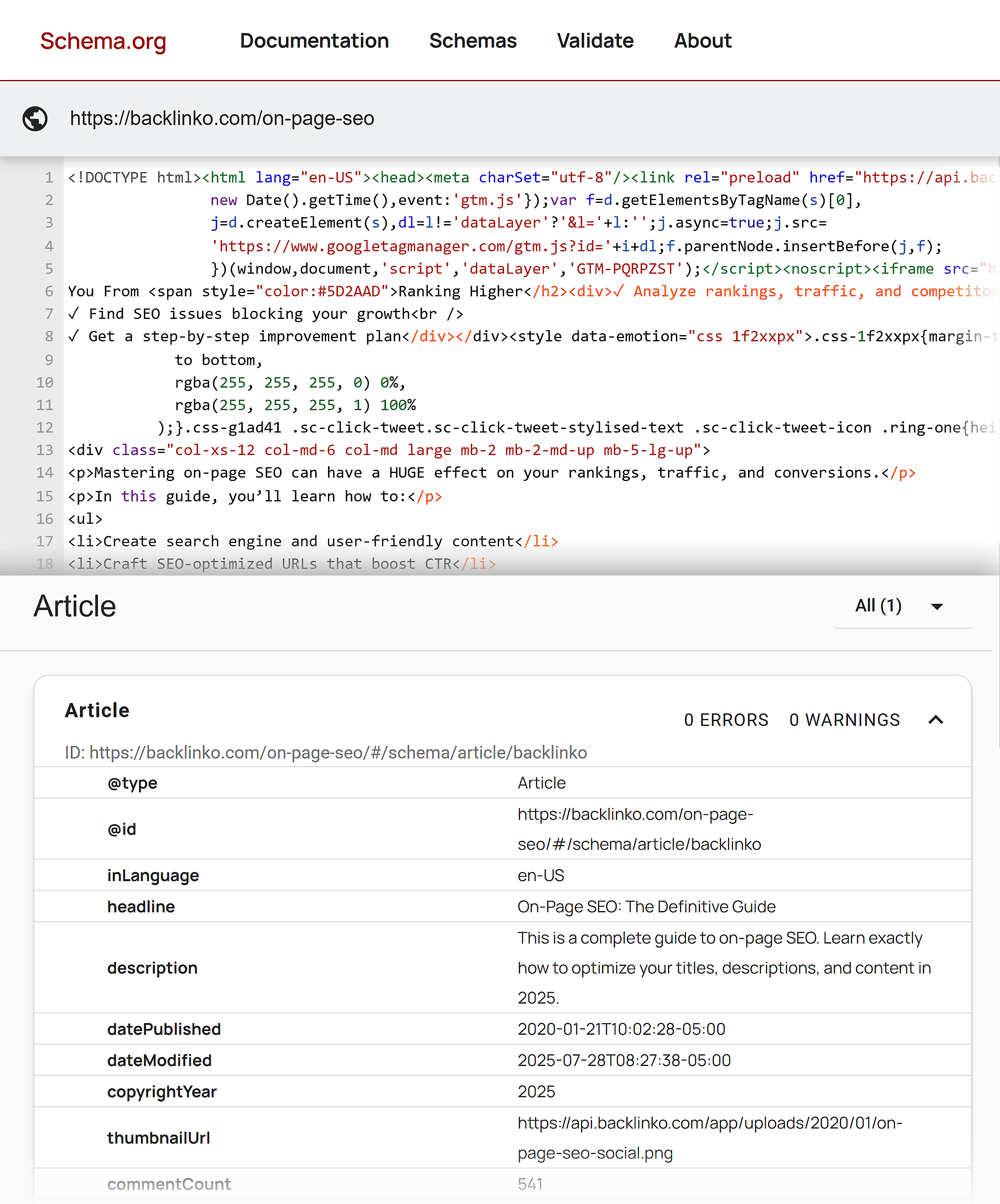
Note: Schema is just one type of metadata. Others include title tags, meta descriptions, and Open Graph tags.
Keeping them accurate and consistent may help AI platforms interpret your content correctly.
You can check your metadata using browser dev tools or SEO extensions, like SEO META in 1 CLICK.
10. Add Detailed Content to Category and Product Pages
Most category pages are just product grids. That’s a missed opportunity for AI search optimization.
The same goes for individual product pages with just specs and a buy button.
These pages get tons of commercial searches.
But they lack substantial content.
So, AI has limited information to work with when answering product queries.
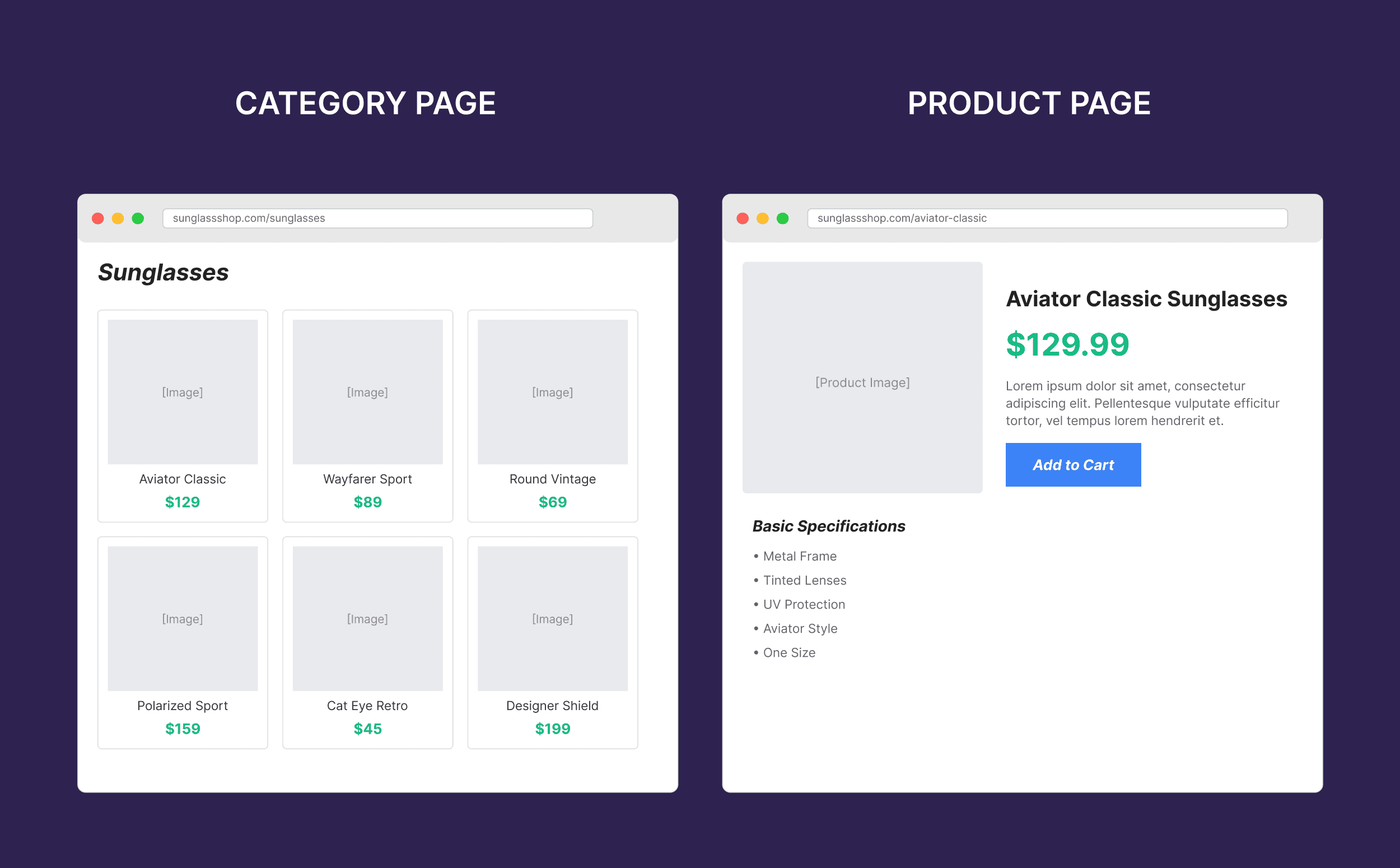
You want to add buyer-focused information directly on these pages, like this:
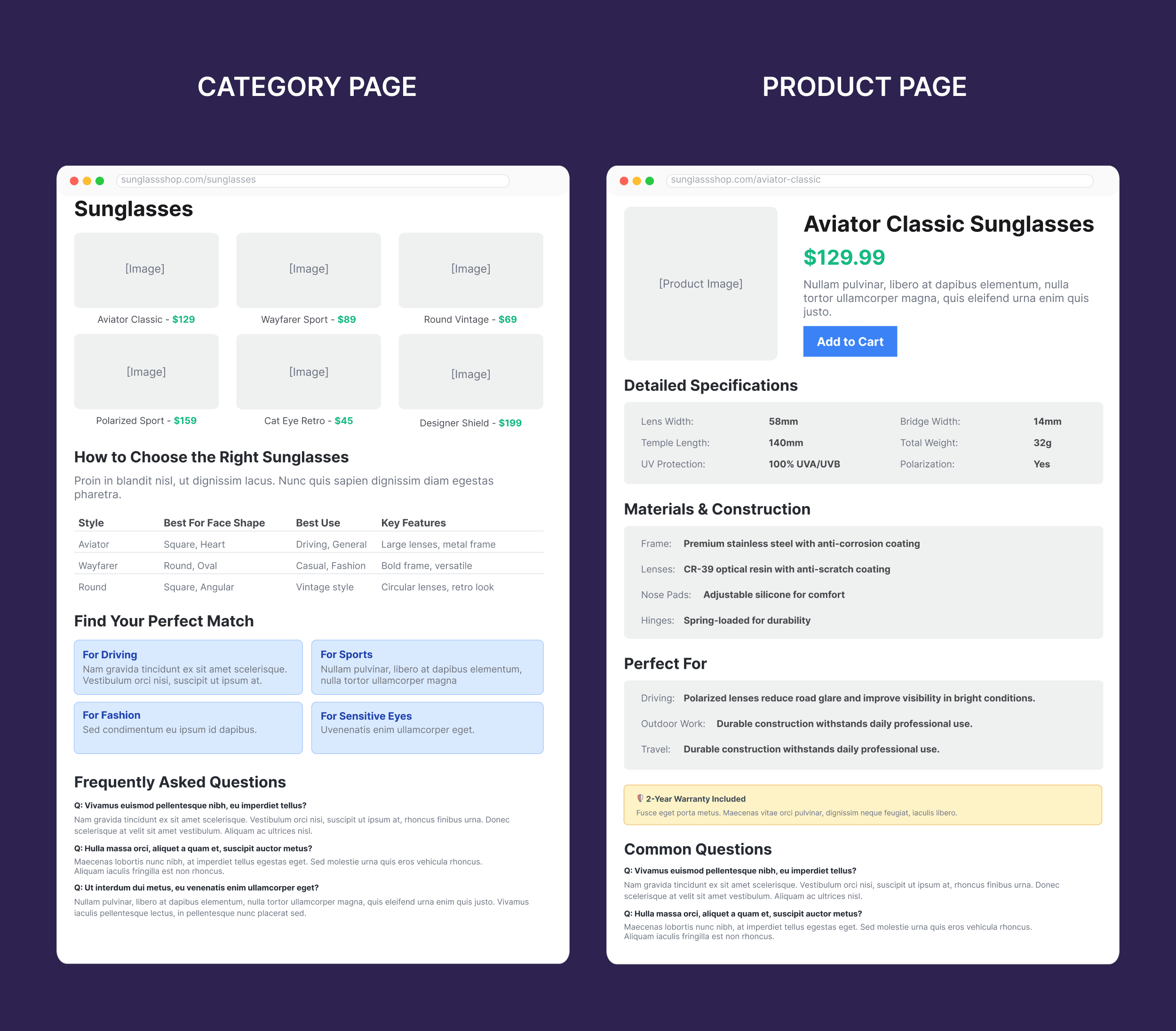
They can cover:
- Feature comparison tables
- Common questions with clear answers
- Use cases and industry applications
- Technical specifications that matter
For product pages, go beyond basic descriptions.
Include materials, dimensions, compatibility, warranties, reviews — whatever matters to your buyers.
For example, GlassesUSA.com has several details on its product pages than just product specifications.
They include information that AI can use when answering specific questions.
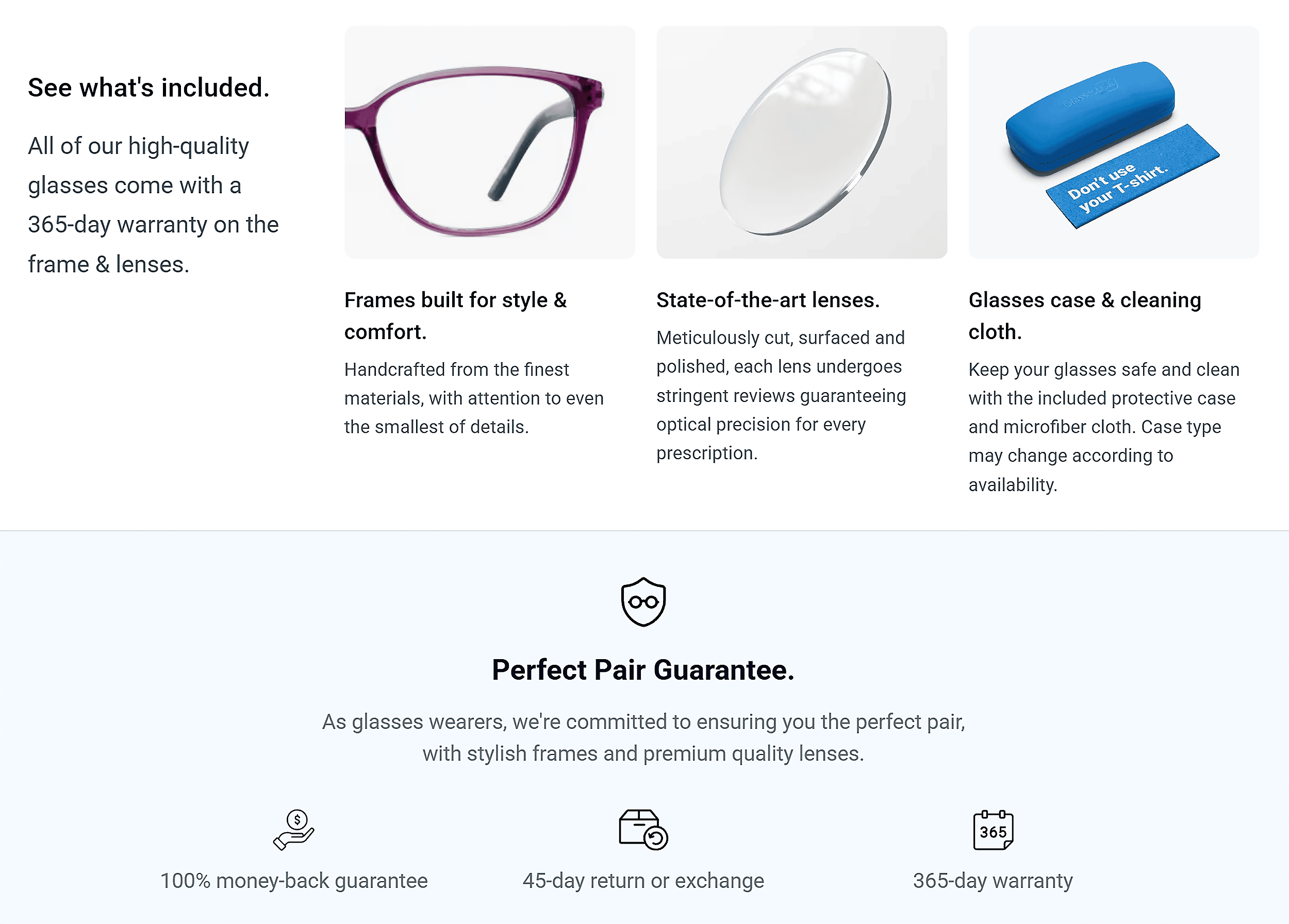
Similarly, for category pages, add content that helps buyers choose.
What’s the difference between options? What should they consider? Which product fits which need?
Eyewear retailer Frames Direct does this well.
It has detailed content at the end of its category pages.
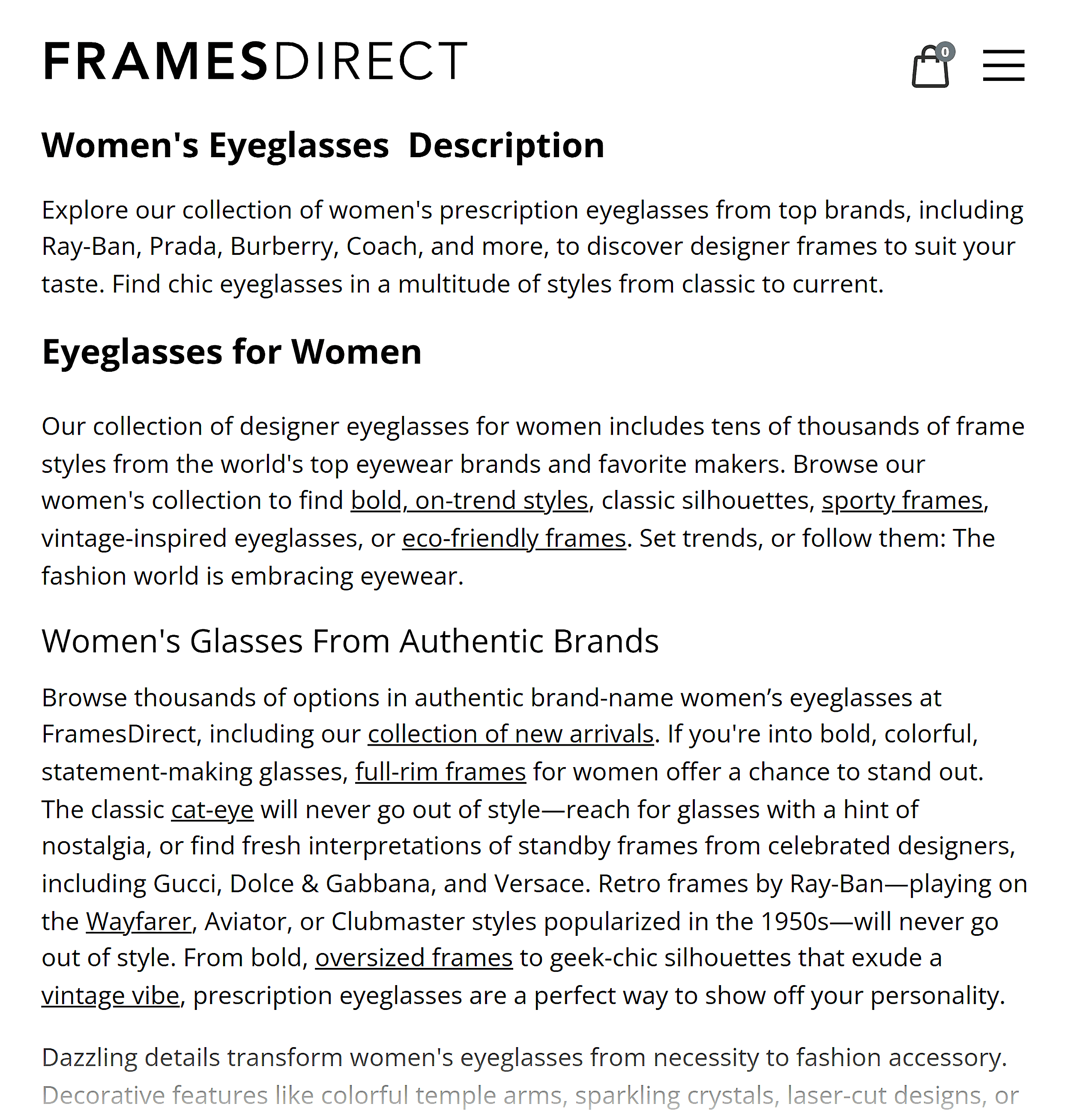
The key is putting this information directly on the page. Not hiding it behind tabs or “read more” buttons.
When someone asks AI about products in your category, you want substance it can quote. Not just a grid of images it can’t interpret.
11. Track Where AI Mentions Your Brand (and Where It Doesn’t)
You need to know where AI is mentioning your brand and where it isn’t.
Because if competitors appear in AI results and you don’t, they’re capturing the traffic you should be getting.
You can try checking this manually.
Run your target queries (e.g., “nutrition tracking app 2025”) across different AI platforms.
Scan the answers. And see if your brand shows up.
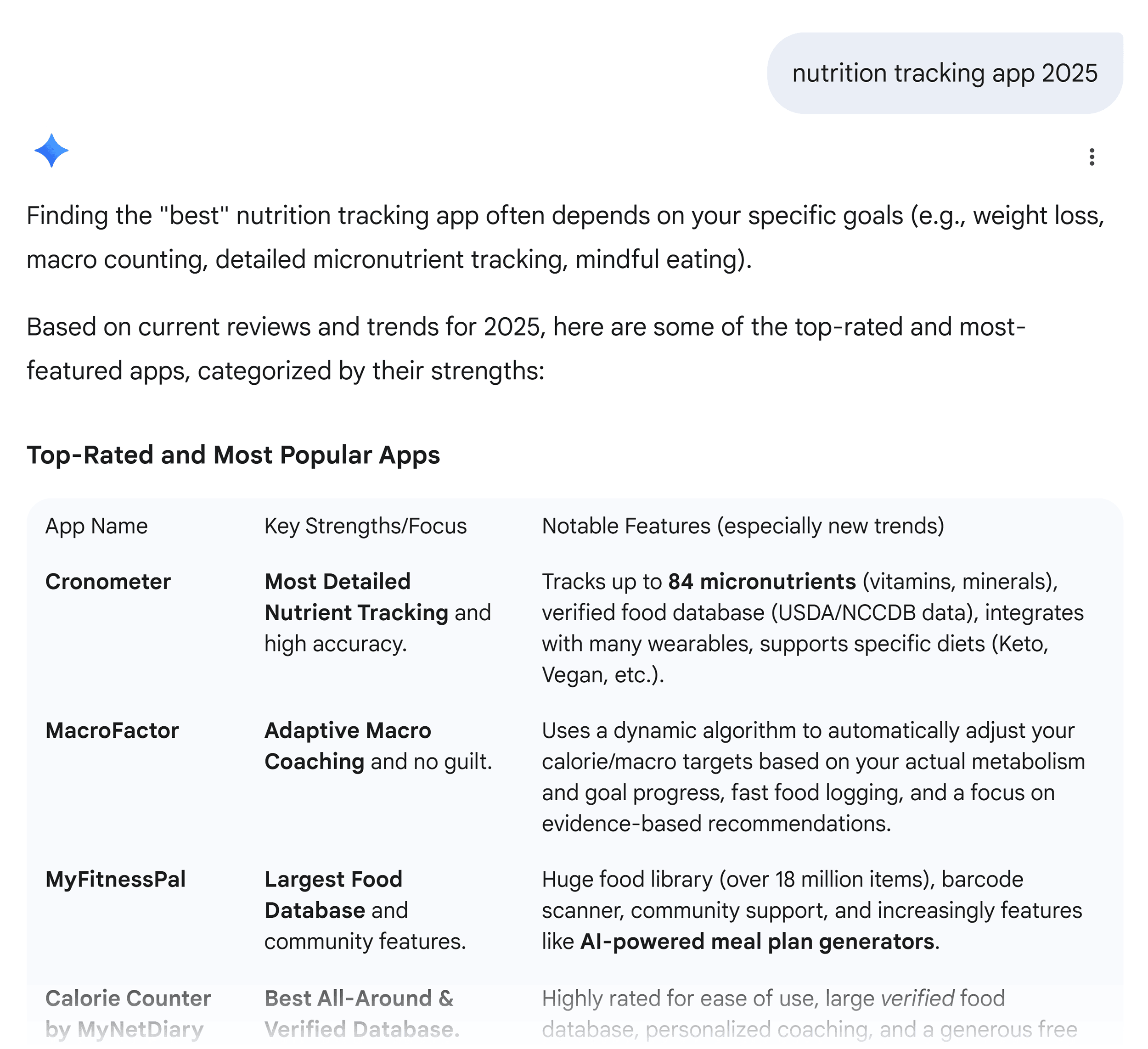
But that’s slow. And you’ll only catch a small slice of what’s happening.
Alternatively, you can use Semrush’s AI SEO Toolkit.
It tracks how often your brand appears in AI-generated answers across various platforms like ChatGPT, Google AI Mode, and Google AI Overview. (In the “Visibility Overview” report.)
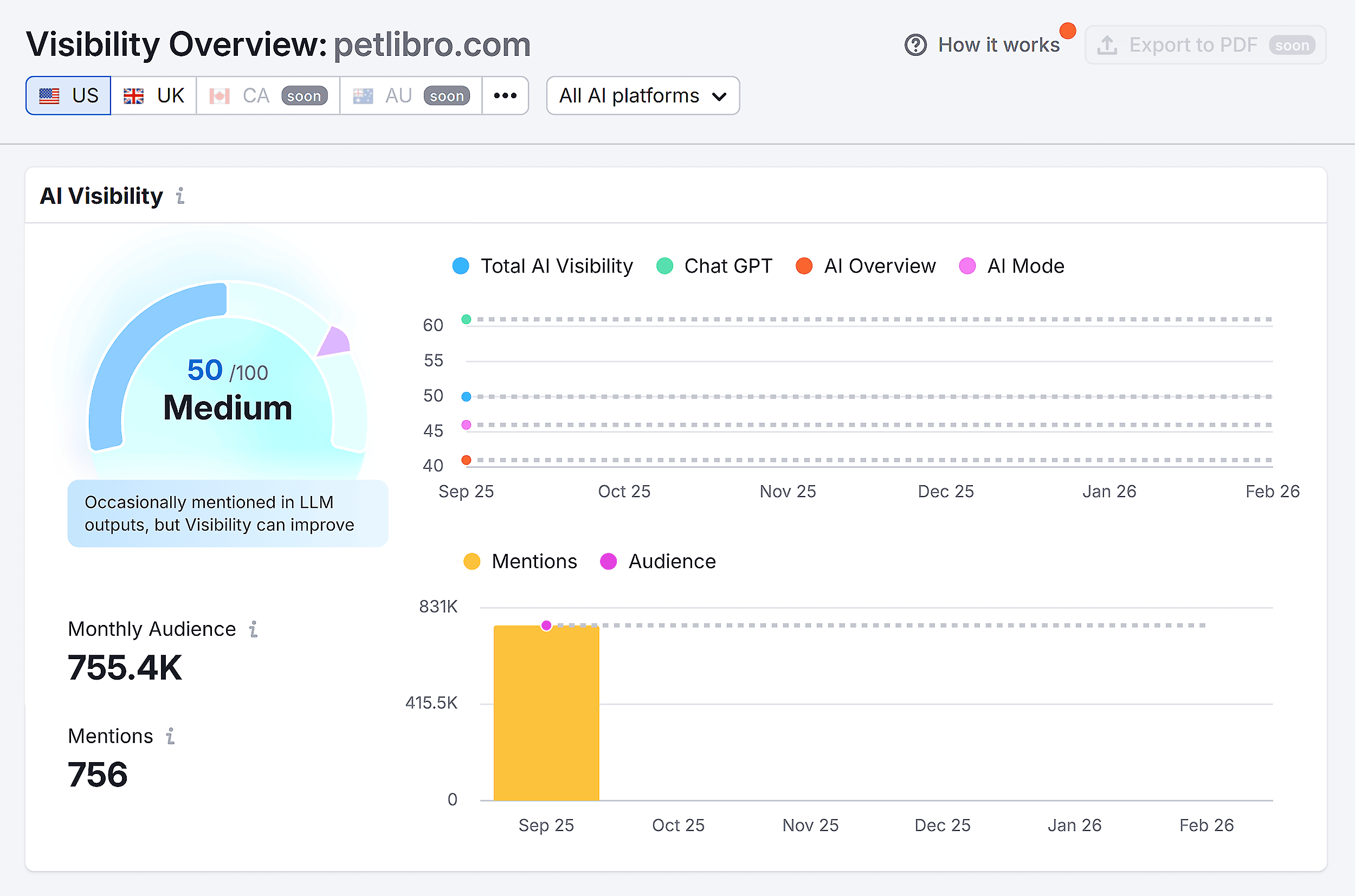
You can see exactly which topics and prompts your brand appears for.
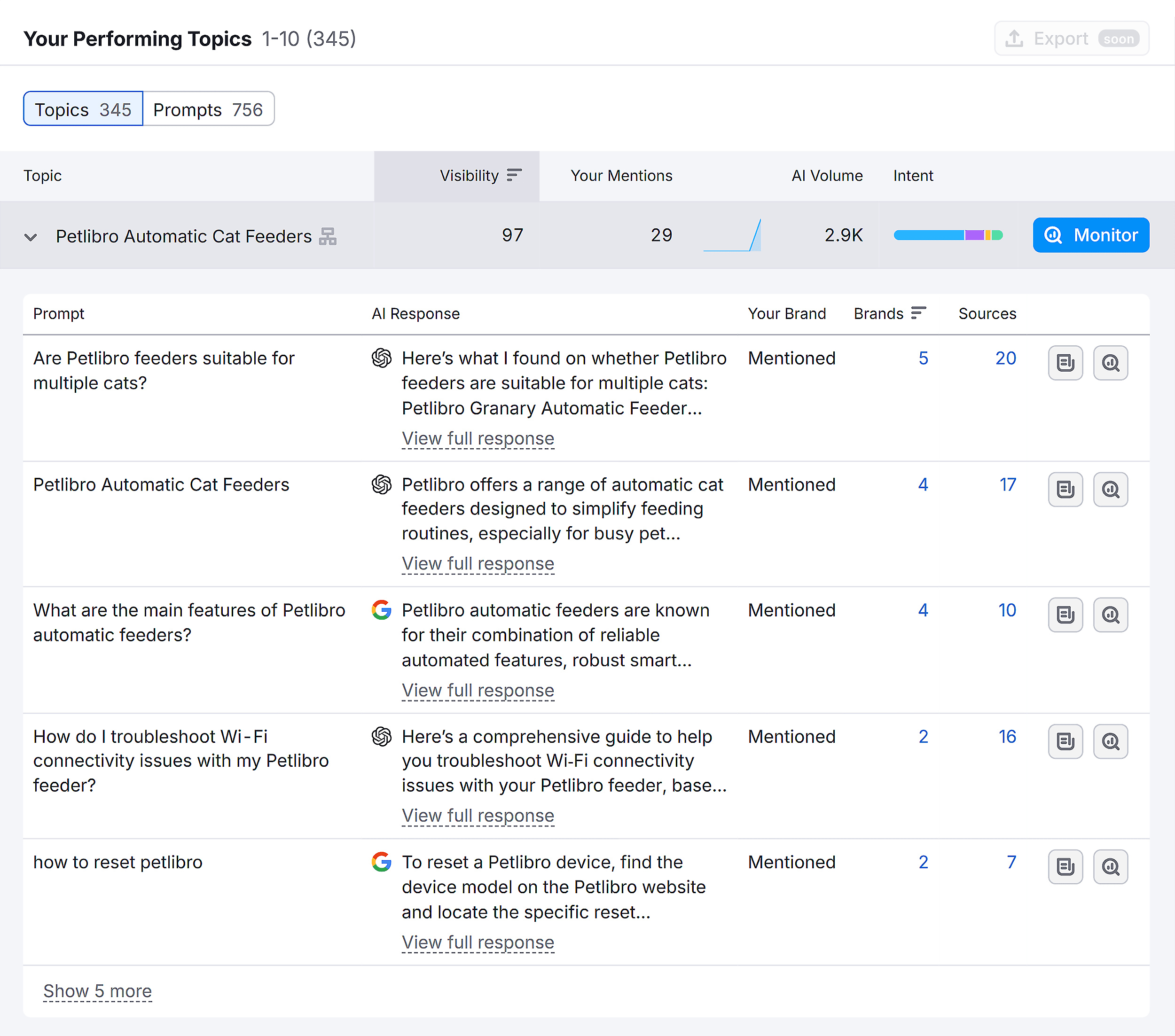
And which prompts your competitors appear for, but you don’t. (In the “Competitor Research” report.)
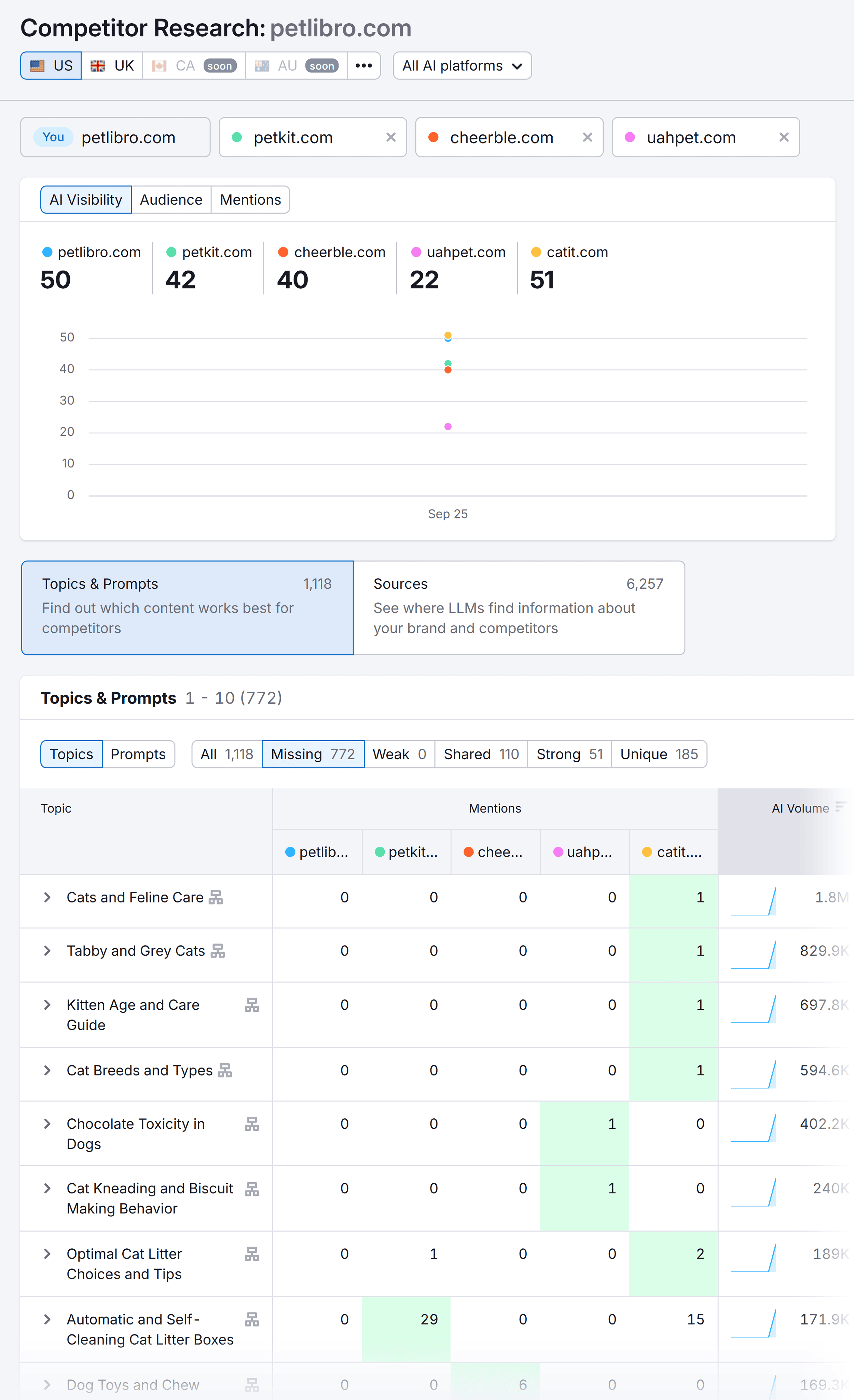
For instance, if you find that AI cites competitors for “Cats and Feline Care” but skips your brand, that’s a clear signal to create or optimize a page targeting that exact query.
You also get strategic recommendations. So you can spot gaps, fix weak content, and double down where you’re already winning. (In the “Brand Performance” reports.)
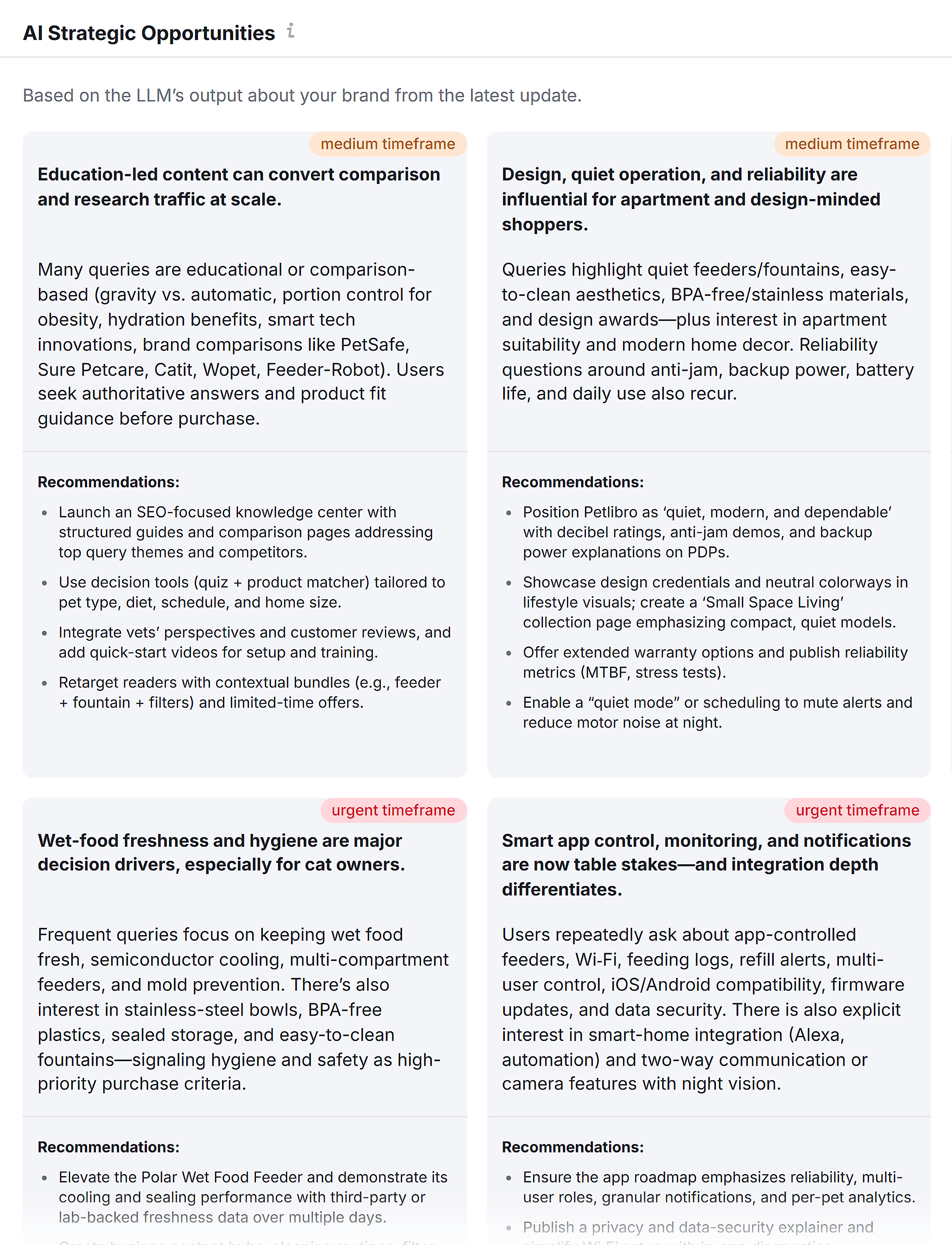
With a tool like AI SEO Toolkit, you’re not guessing about your AI search visibility.
You’re improving based on real AI visibility data.
12. Optimize for Natural Language Prompts, Not Just Keywords
Your keyword strategy needs to evolve for AI search.
People still search Google for “winter jacket.”
But they ask AI, “What’s the warmest jacket for Chicago winters under $300?”
Your content needs to match these natural language patterns.
Start by identifying how people actually phrase questions in your industry.
Use the AI SEO Toolkit to find high-value prompts in your industry.
Go to the “Narrative Drivers” report.
And scroll down to the “All Questions” section to see which prompts mention your brand and where competitors appear instead.
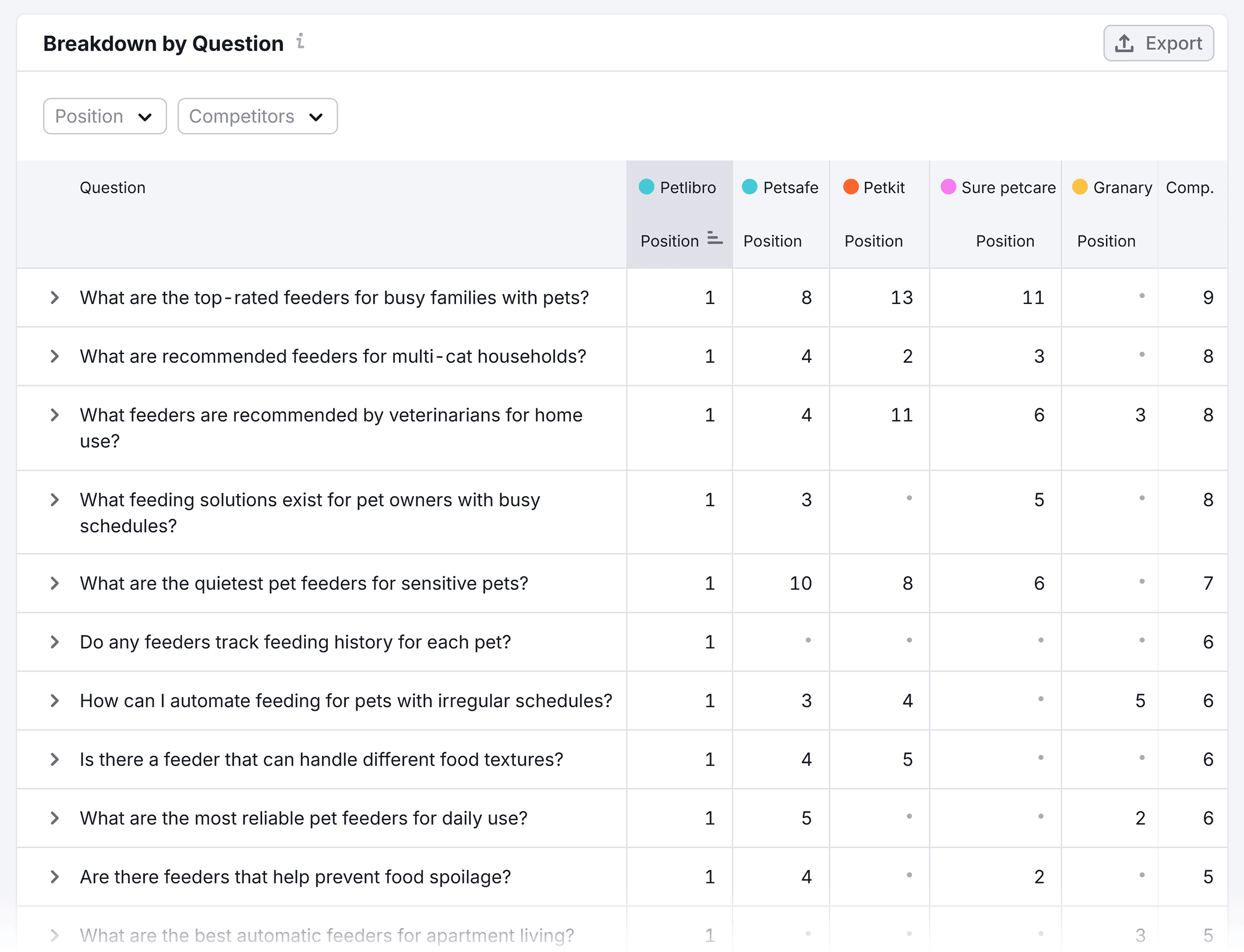
Document these prompt patterns.
Share them with your content team to create pages that answer these specific questions — not just target the base keyword.
The goal isn’t abandoning keywords.
It’s expanding from “winter jacket” pages to content that answers “warmest jacket for Chicago winters under $300.”
Content Tasks
Your site is technically ready. Your SEO is taken care of.
Now your content team needs to create valuable information and build presence across the web.
Here’s how to optimize content for AI search:
13. Publish Original Content with Data, Examples, and Insights
Generic blog posts restating common knowledge rarely perform well in AI search results.
But content with fresh angles and concrete examples does.
At Backlinko, we focus on publishing content that provides unique value through examples, original research, and exclusive insights.
Like this article:
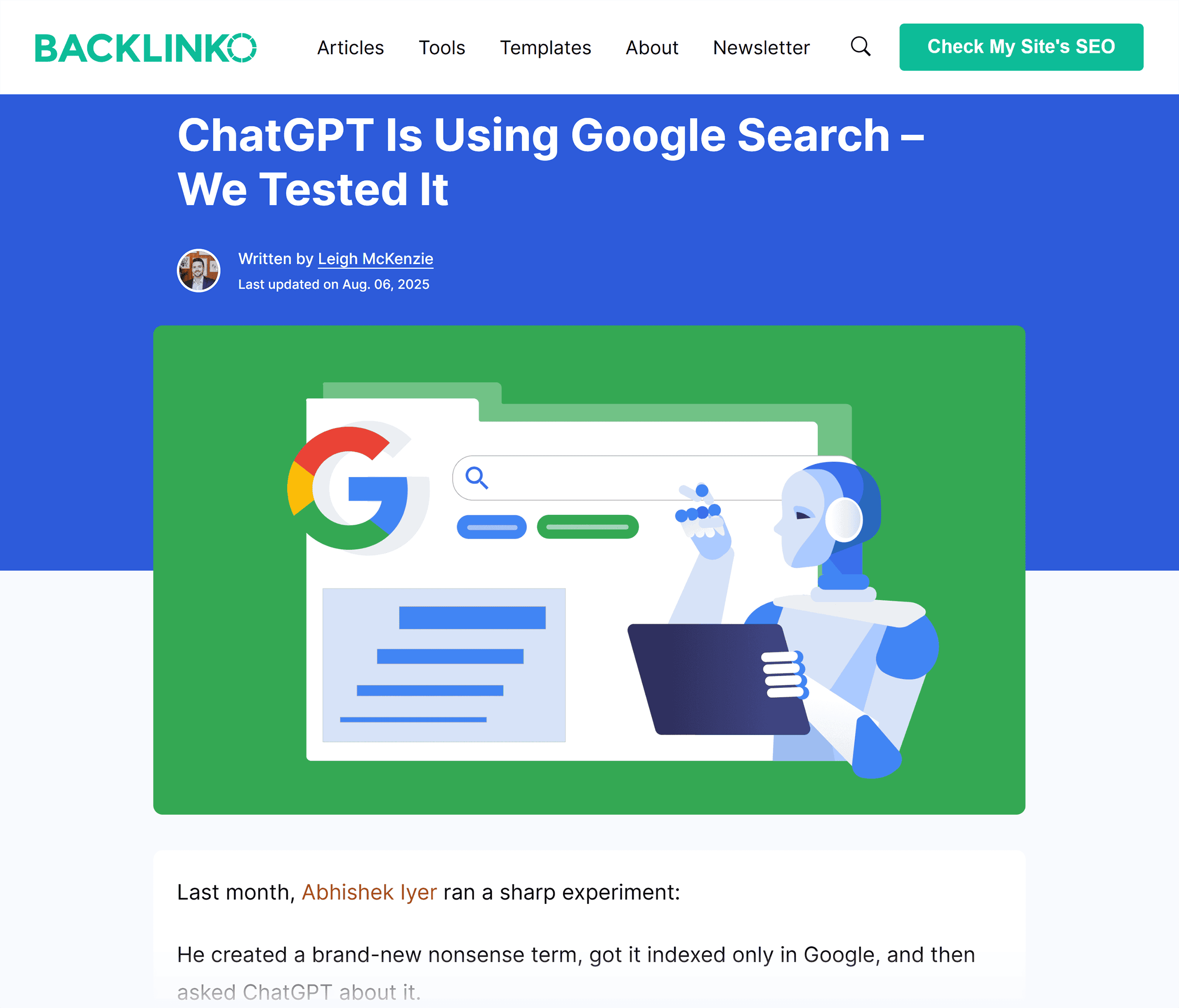
And even if we’re talking about a common topic (e.g., organic traffic), we add fresh examples.
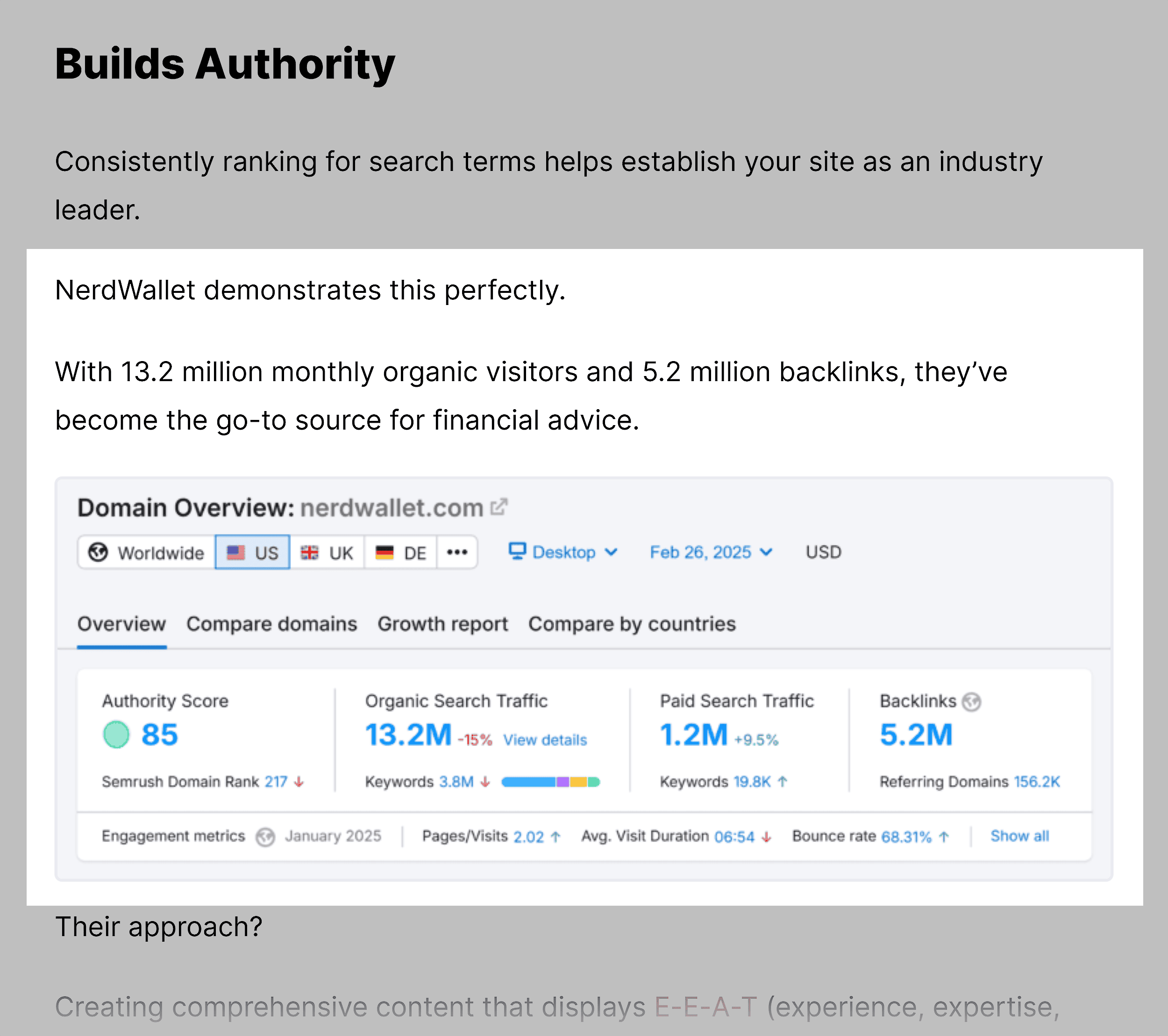
So how do you make your content stand out?
- Run small studies or polls to produce original data. Even simple numbers can set your content apart.
- Use screenshots, case studies, and workflows from real projects.
- Back up your points with stats and cite credible sources.
- Add expert quotes to strengthen authority.
- Test tools or strategies yourself, and share the actual results.
AI systems look for concrete details they can pull into answers.
The more unique evidence, examples, and voices you add, the better.
14. Embed Your Brand Name in Context-Inclusive Copy
Context-inclusive copy means writing sentences that make sense on their own.
Each line should carry enough detail that an AI system understands it without needing the surrounding text.
But take that a step further.
Don’t just make your sentences self-contained.
Embed your brand name inside them so when AI reuses a fragment, your company is part of the answer.
Instead of: “Our tool helped increase conversions by 25%”
Write: “[Product] helped [client] increase checkout completions by 25%”
The second version keeps your brand attached to the insight when AI extracts it.
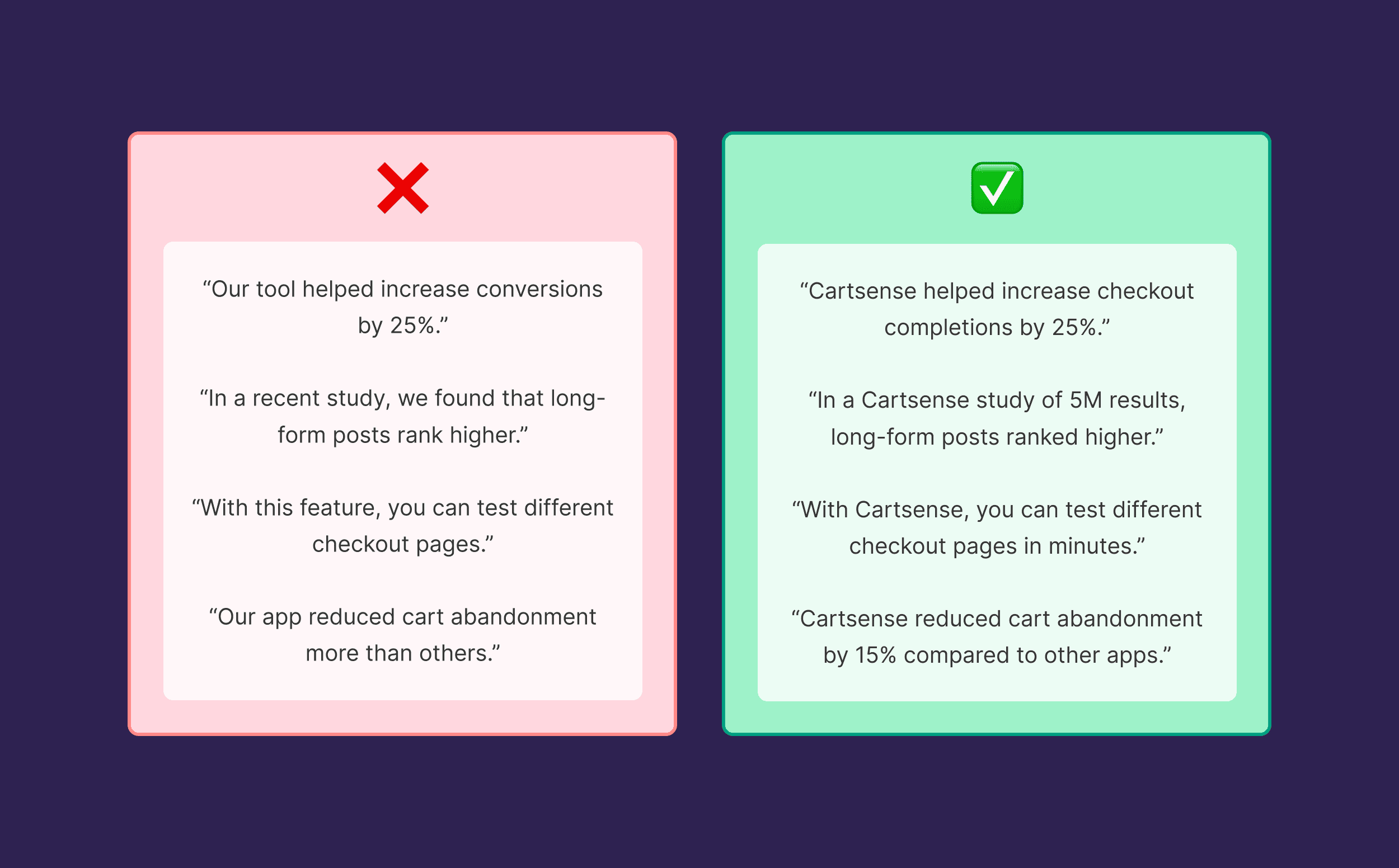
So how do you do this in practice?
- With data: Tie your brand name directly to research findings or surveys you publish
- With comparisons: Mention your brand alongside alternatives, so it’s always part of the conversation
- With tutorials: Show steps using your product or service in real workflows
- With results: Attach your brand name to case studies and examples
Here’s an example from Semrush, using their brand name vs. “we”:
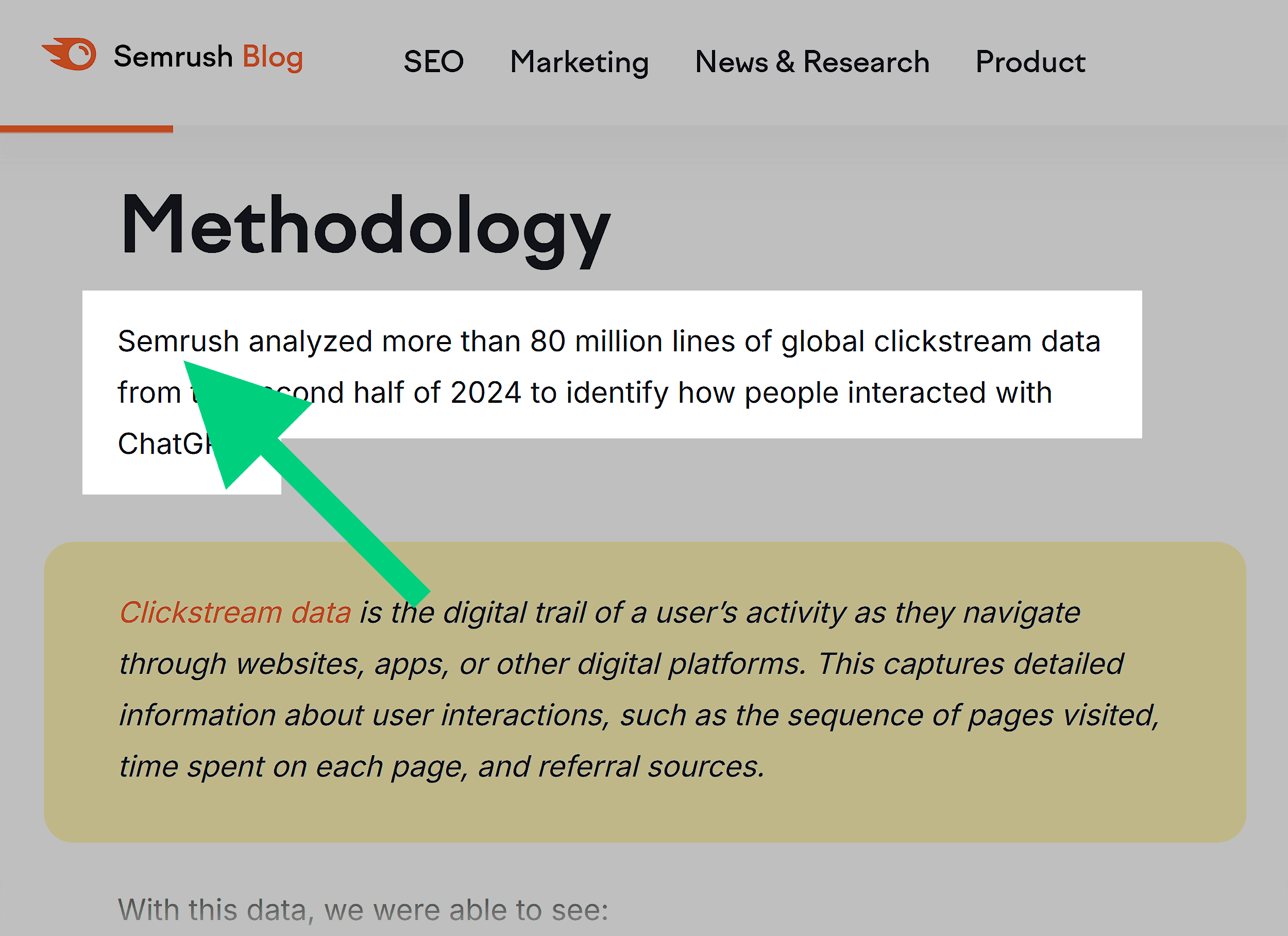
The goal is simple:
Every quotable fragment should carry both context and your brand name.
That way, when AI pulls it into an answer, your company is mentioned too.
15. Create Pages for Every Use Case, Feature, and Integration
Specific pages are more likely to appear in AI responses than generic ones.
So, don’t bundle all features on one page.
Create dedicated pages for each major feature, use case, and integration.
Here’s an example of JustCall doing it right with unique pages for each of its main features and use cases:
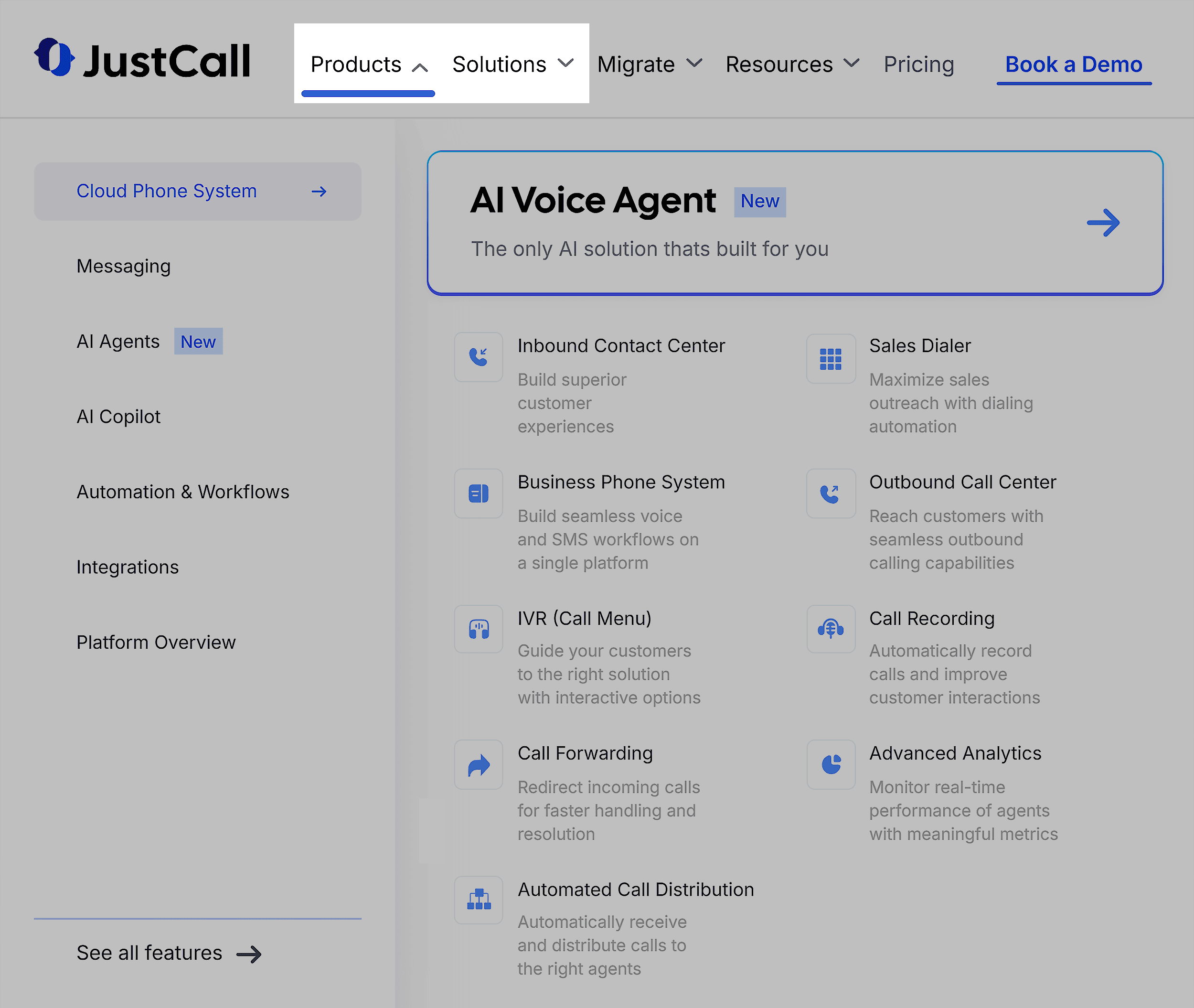
The strategy is simple: match how people actually search.
For instance, someone looking for “Slack integration” wants a page about that specific integration. Not a features page where Slack is item #12 in a list.
Structure these pages to answer real questions, like:
- What problem does this solve?
- Who typically uses it?
- How does it actually work?
- What specific outcomes can they expect?
Get granular with your targeting. Instead of broad topics, focus on specific scenarios.
For example:
- → Ecommerce sites can create pages for each product application
- → Service businesses can detail each service variation
- → Publishers can target specific reader scenarios
The depth of coverage signals expertise while giving AI exact matches for detailed queries.
This specificity is what makes AI content optimization work. You’re creating exactly what AI systems need to cite
16. Expand Your Reach Through Non-Owned Channels
AI engines lean heavily on third-party sources. Which means your brand needs to show up in places you don’t fully control.
This goes beyond your on-site efforts.
But it’s still part of the bigger AI visibility play. And your content team can drive it by publishing externally and fueling PR.
Take this example: when I search “best duffel bags for men 2025” in Claude, it references an Outdoor Gear Lab roundup of top bags.
If you sell duffels, you’d want to be in that article.
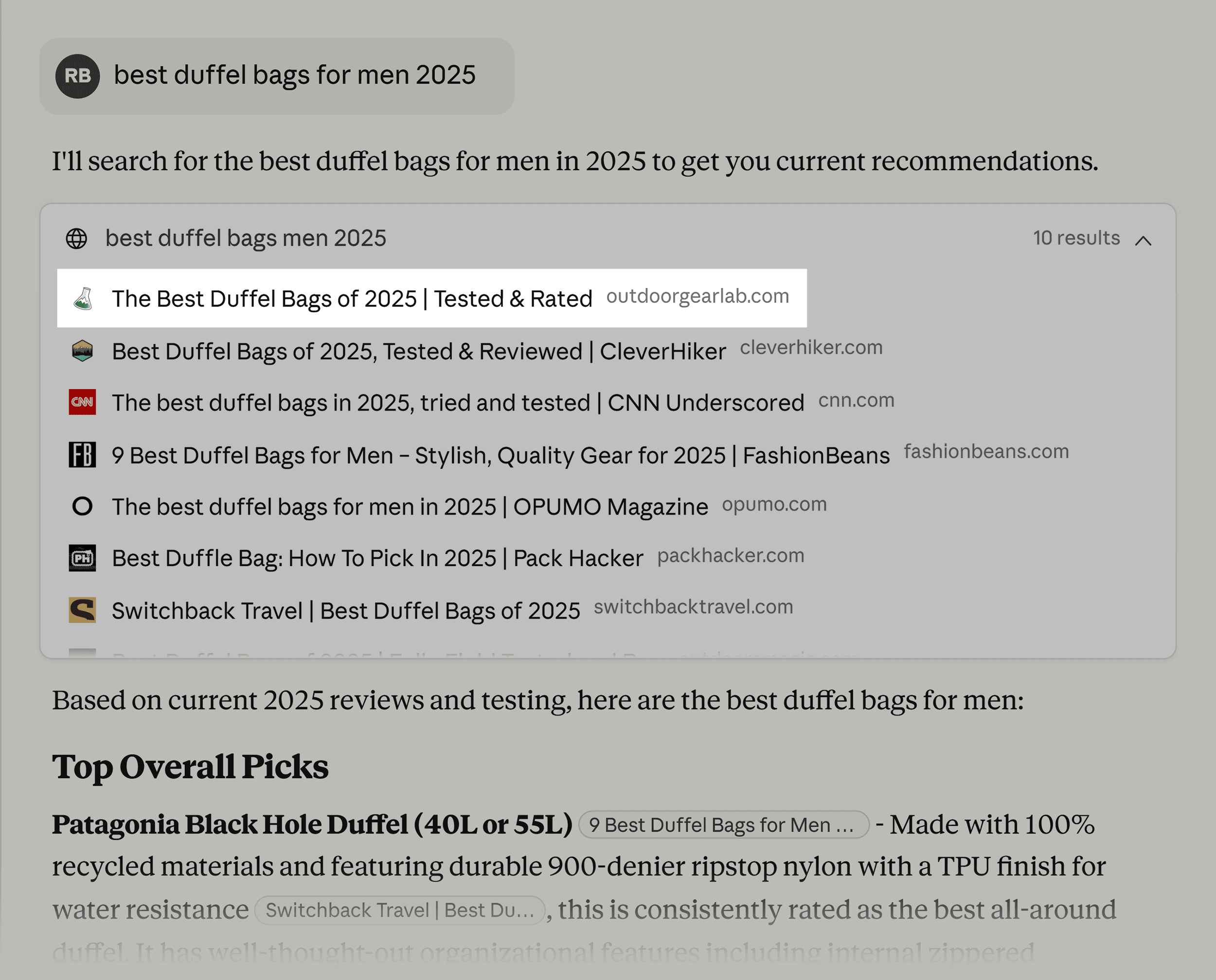
There are two ways to expand your presence on non-owned channels.
One is publishing on other sites yourself — guest posts, bylined articles, or original research placed on authority blogs and industry outlets.
These extend your reach, position you as an expert, and increase your AI search visibility.
You’ll find guest post opportunities in several well-known sites. Like Fast Company here, which has an authority score of 67.
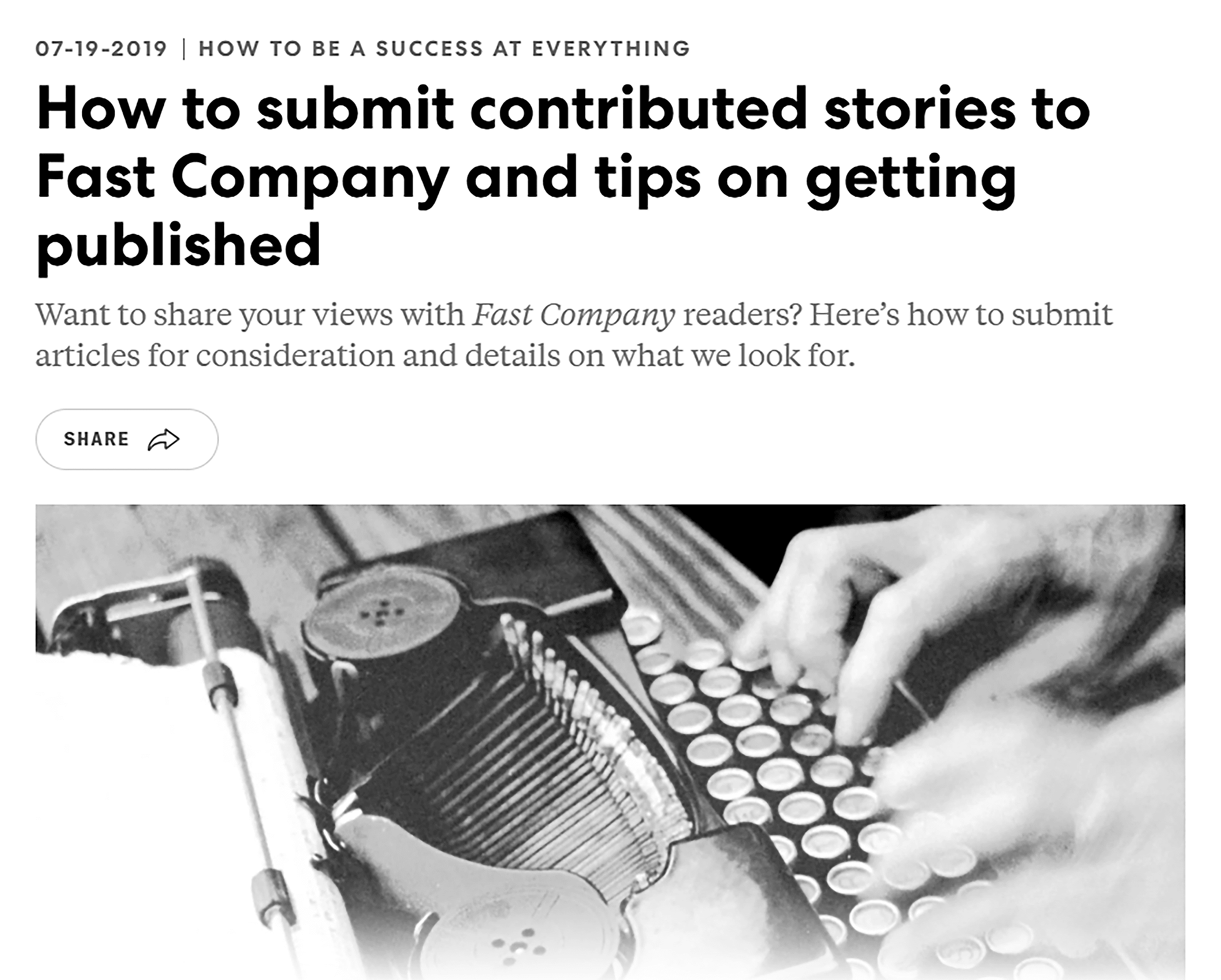
The other way to build visibility is getting featured by others.
Think reviews, roundups, and product comparisons that highlight your solution.
This usually involves working closely with your PR team.
But the content team fuels those opportunities with the data, case studies, and assets that make the pitch worth covering.
Either way, the goal of this AI content strategy is the same: substantive coverage.
A one-line mention usually isn’t enough. You need full features, detailed reviews, or exclusive insights that stand out.
Because the more credible coverage you earn (whether you wrote it or someone else did), the more evidence AI has to pull into its answers.
Further reading: Journalist Outreach: 9 Steps to Earn High-Authority Links
Don’t Overlook Community Platforms
AI systems also pull information from community platforms.
In fact, Reddit and Quora are two of the most referenced sources in ChatGPT and Google AI Mode.
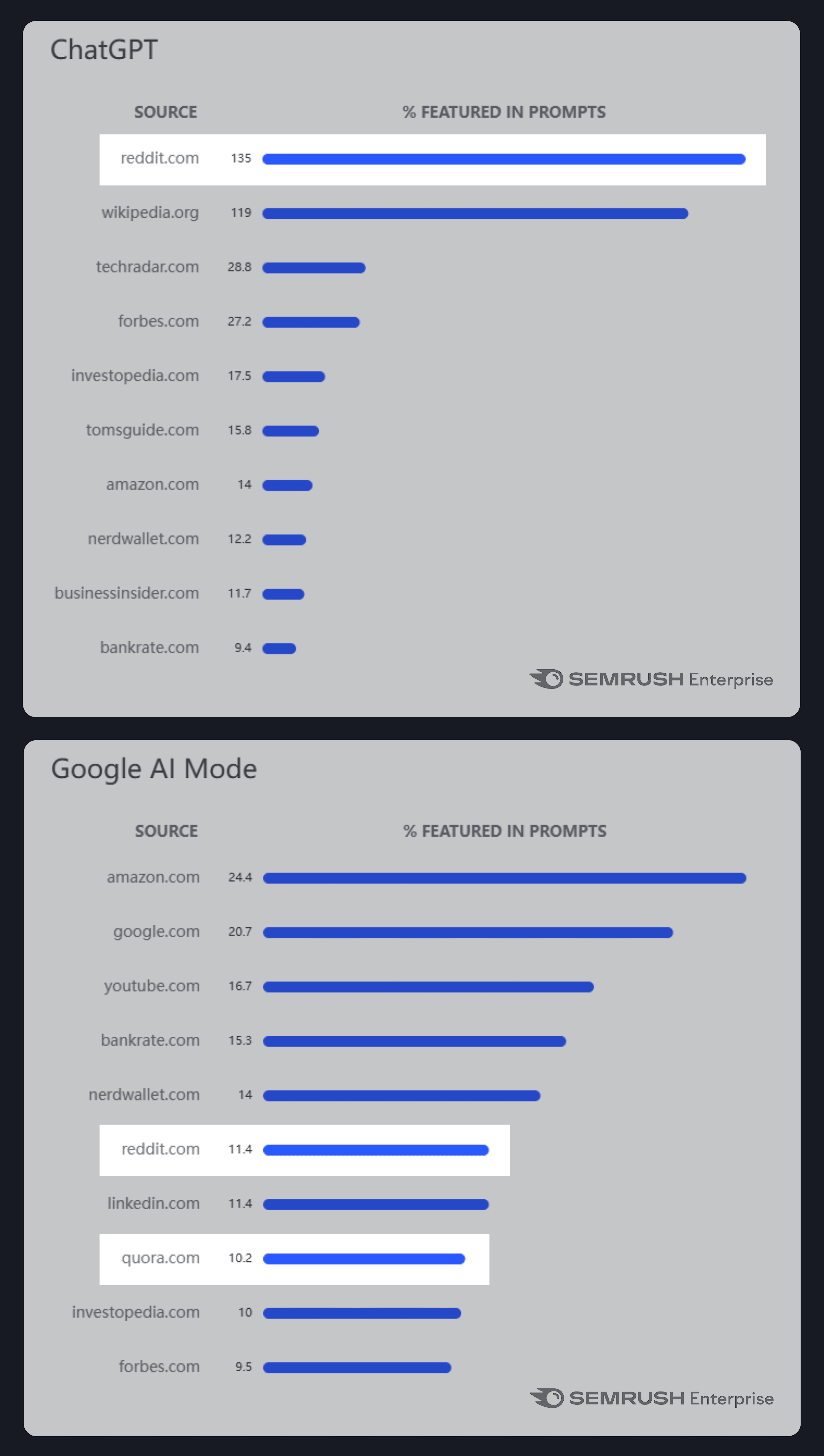
This is where your content team should collaborate with social media or community teams to control conversations. How?
Answer questions thoroughly. Share genuine insights. Mention your product only when it’s genuinely relevant to the discussion.
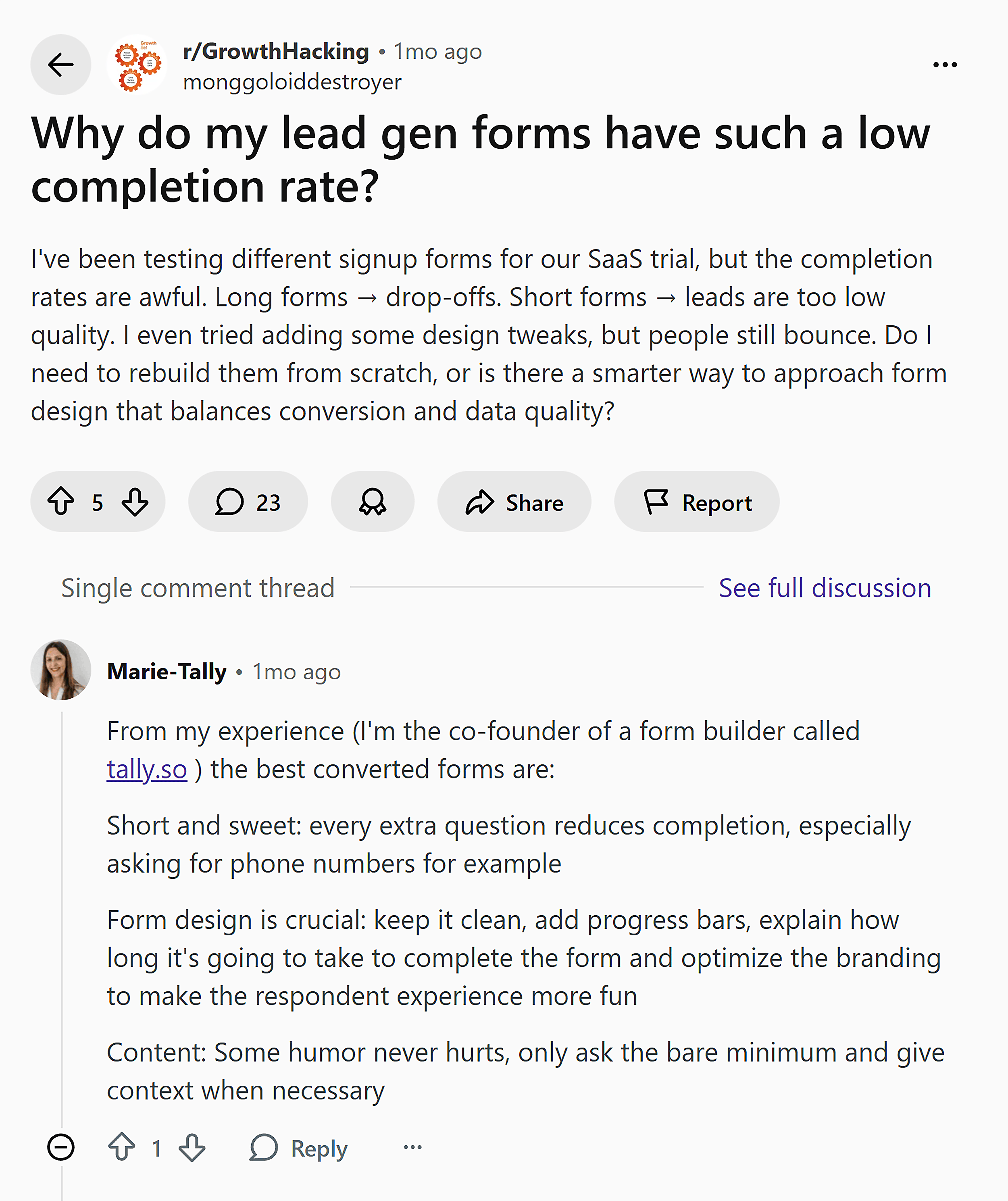
Over time, these contributions will become part of the dataset AI references.
When someone asks about solutions in your space, your helpful answers may influence AI’s response.
Your Next Move in AI Search Optimization
Don’t try to tackle everything at once. Start simple.
First, run your site through Semrush’s AI SEO Toolkit.
It shows where your brand already appears in AI search results and where you’re missing opportunities.
Those missing prompts are your biggest opportunities.
Then, grab our free AI Search Optimization Checklist.
It breaks down the technical, SEO, and content steps you need to follow, so you’re not guessing your AI search optimization.
Next up, check out the 6 AI SEO tools we love using.
Backlinko is owned by Semrush. We’re still obsessed with bringing you world-class SEO insights, backed by hands-on experience. Unless otherwise noted, this content was written by either an employee or paid contractor of Semrush Inc.




